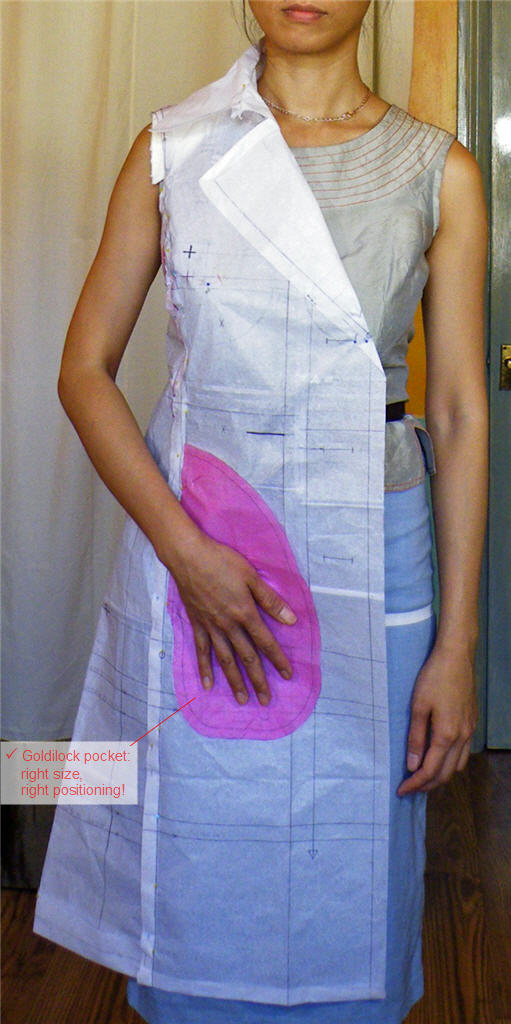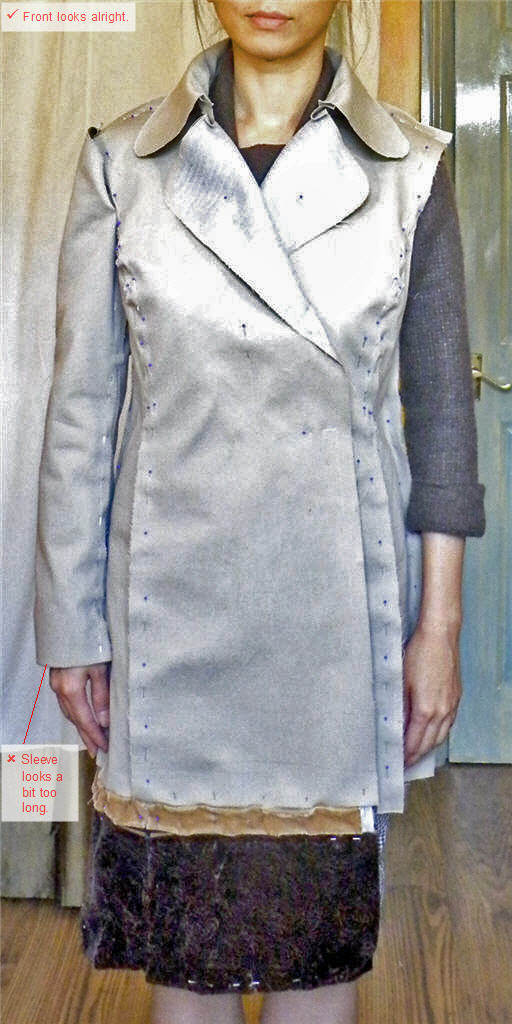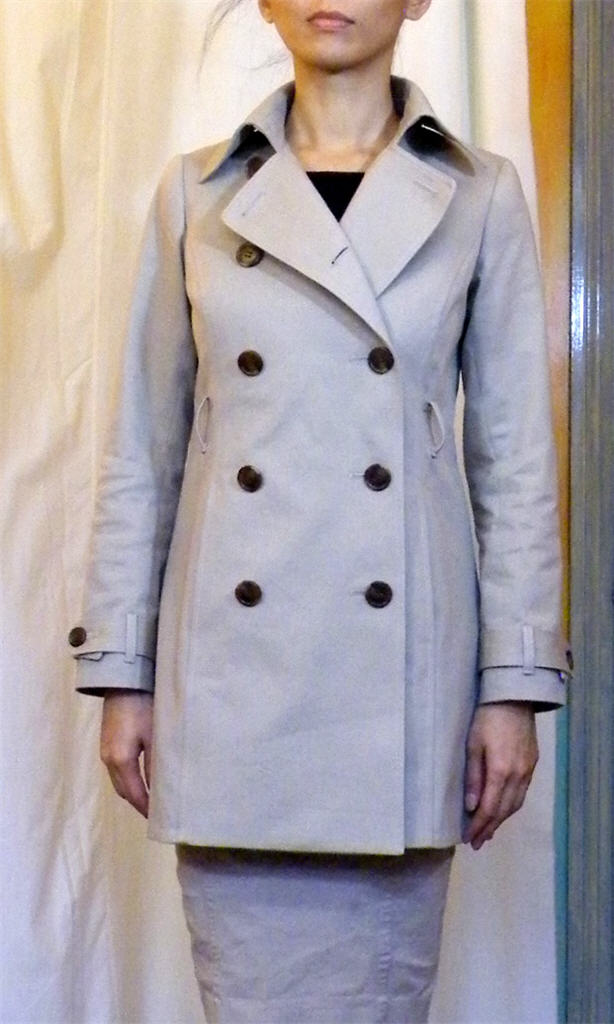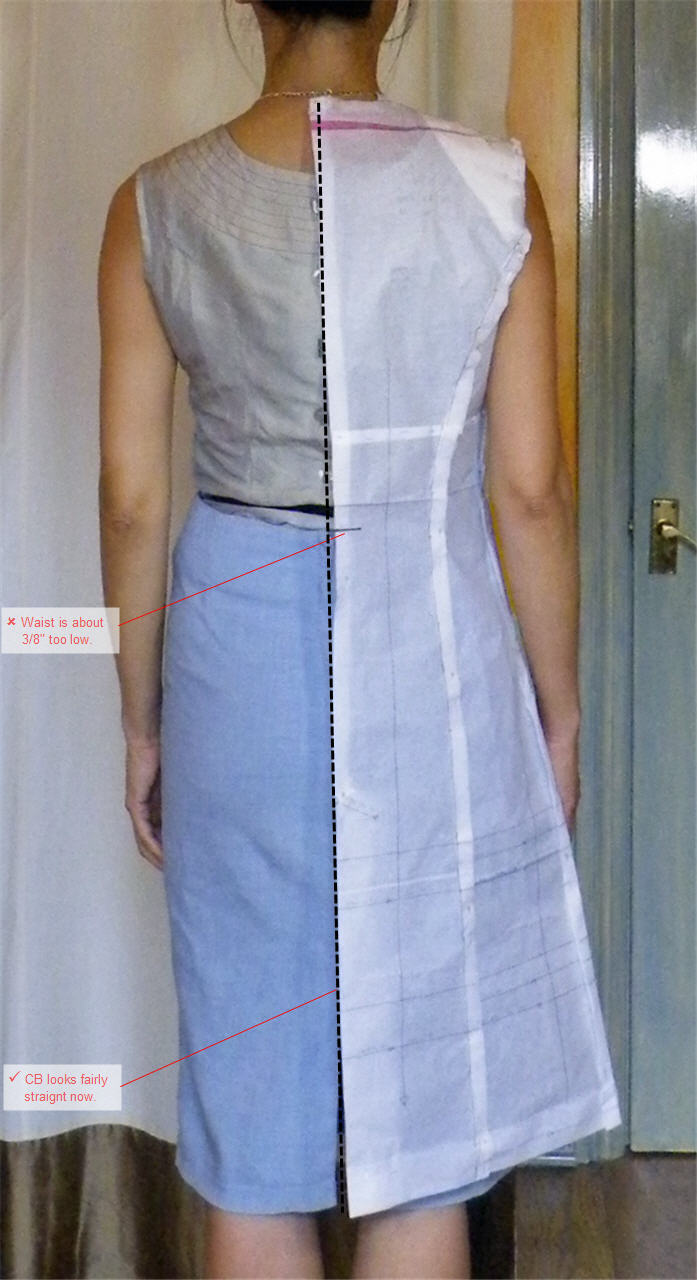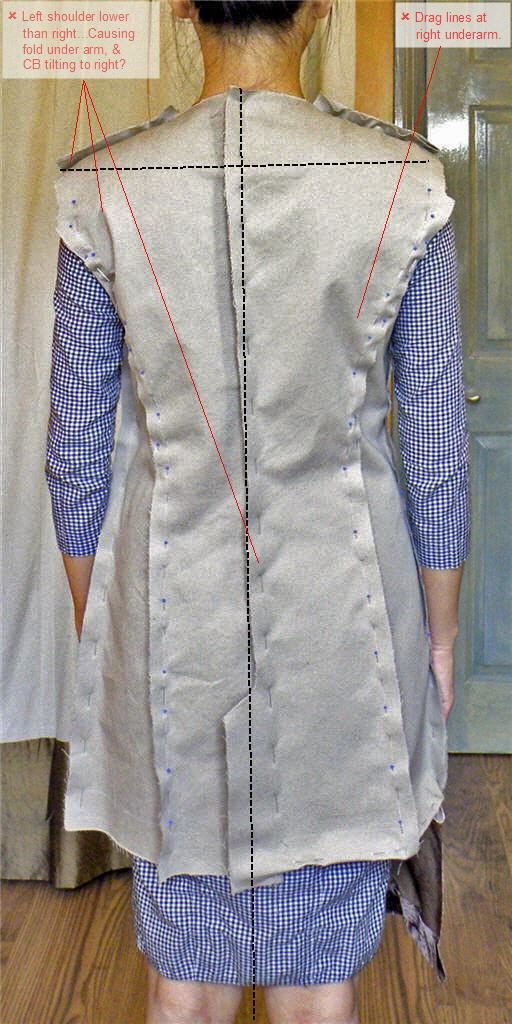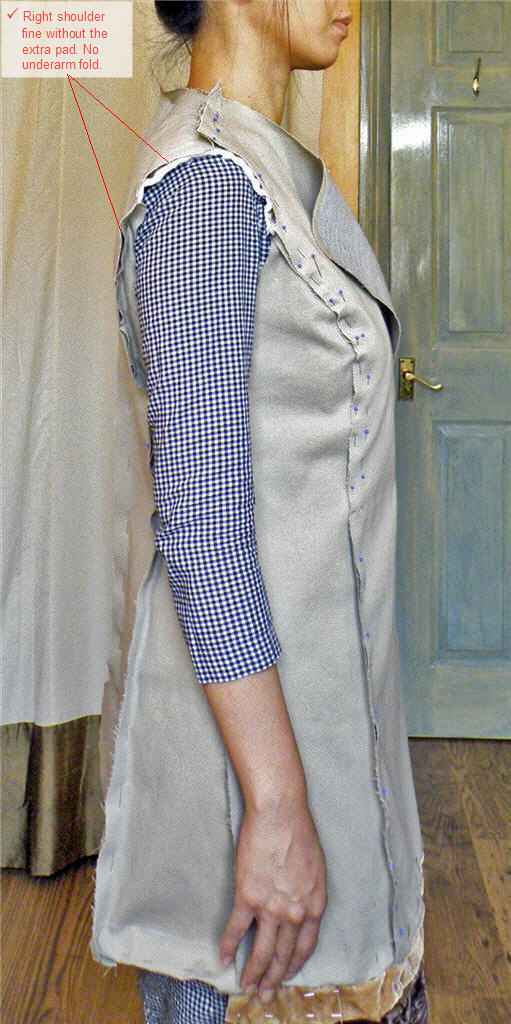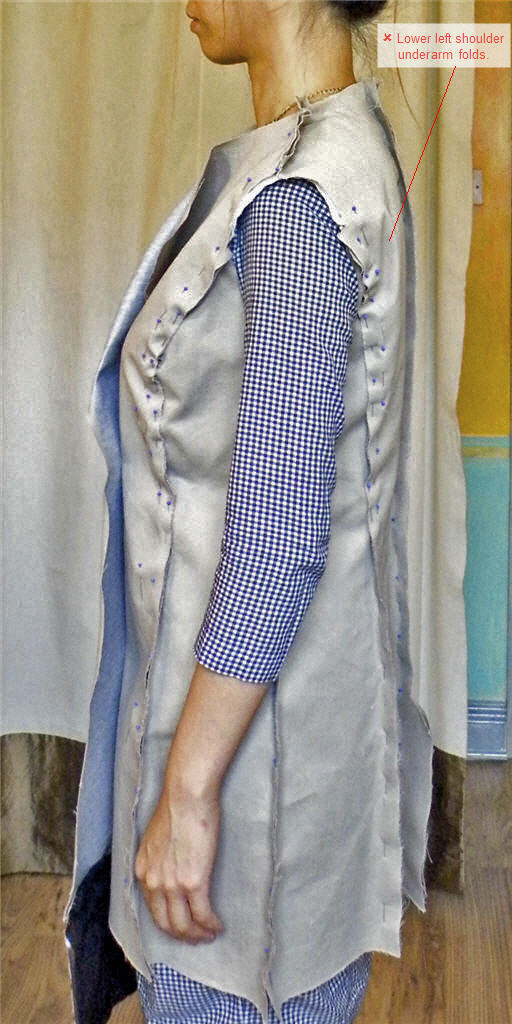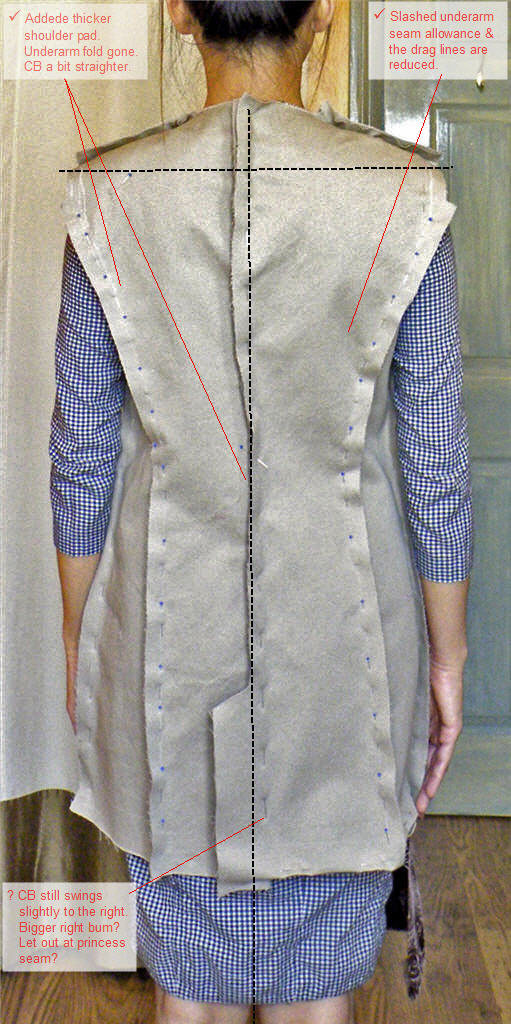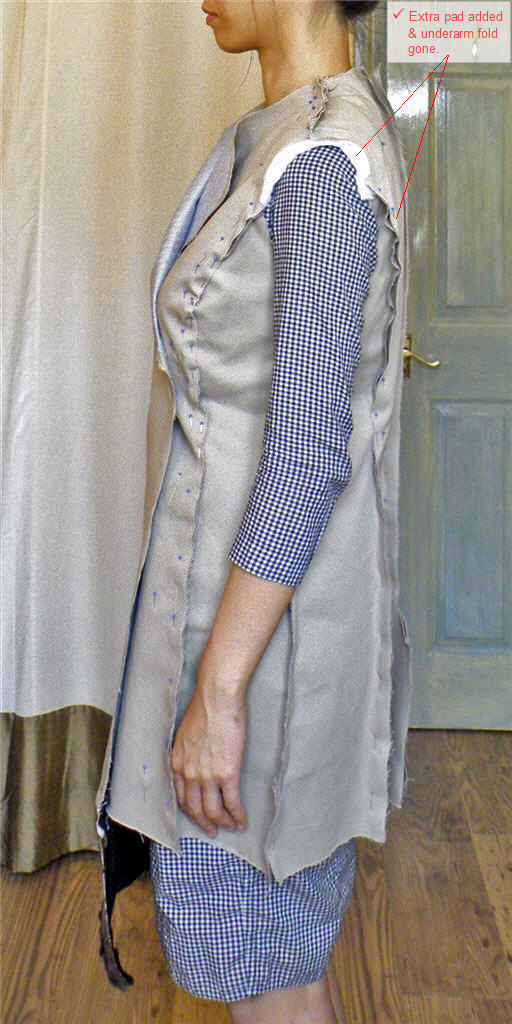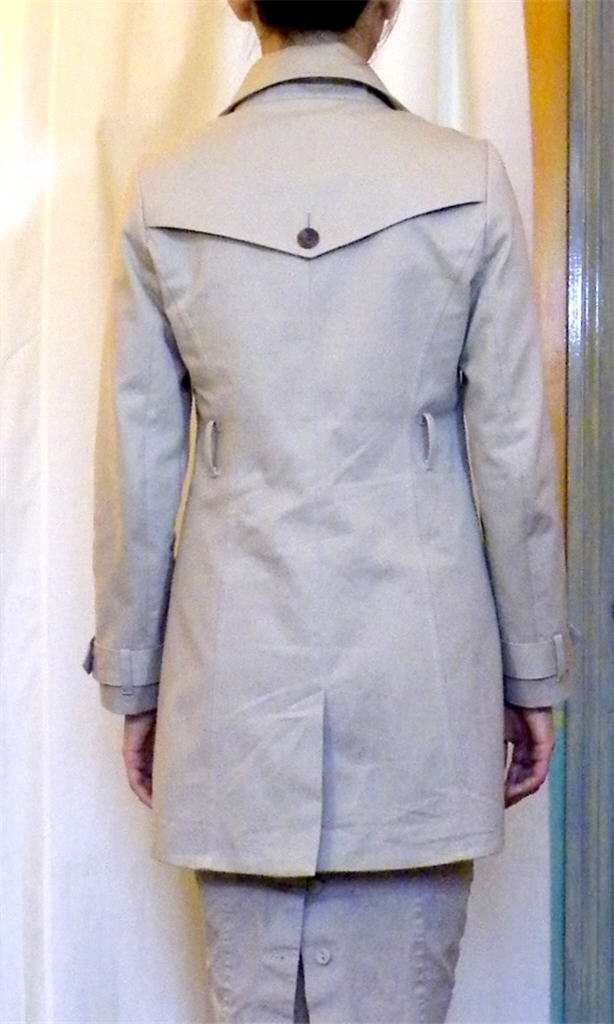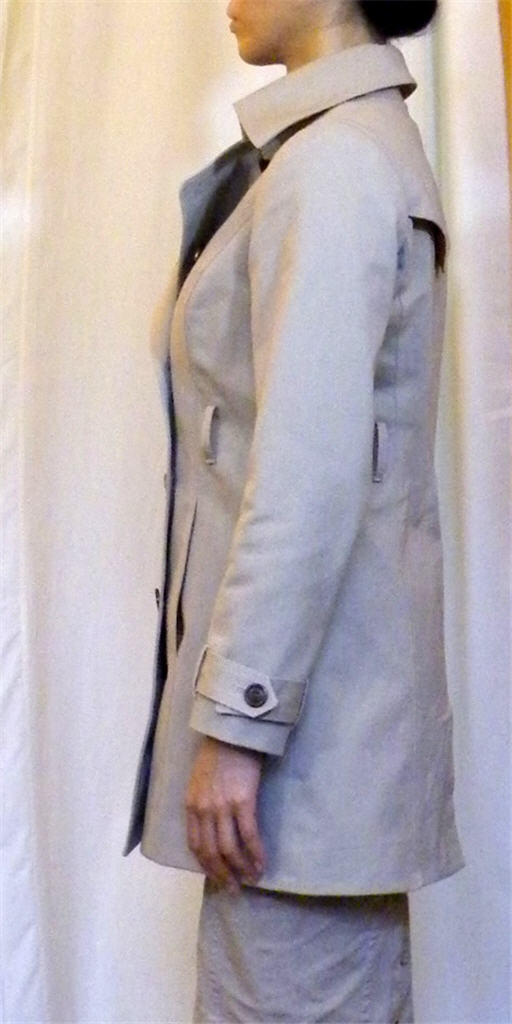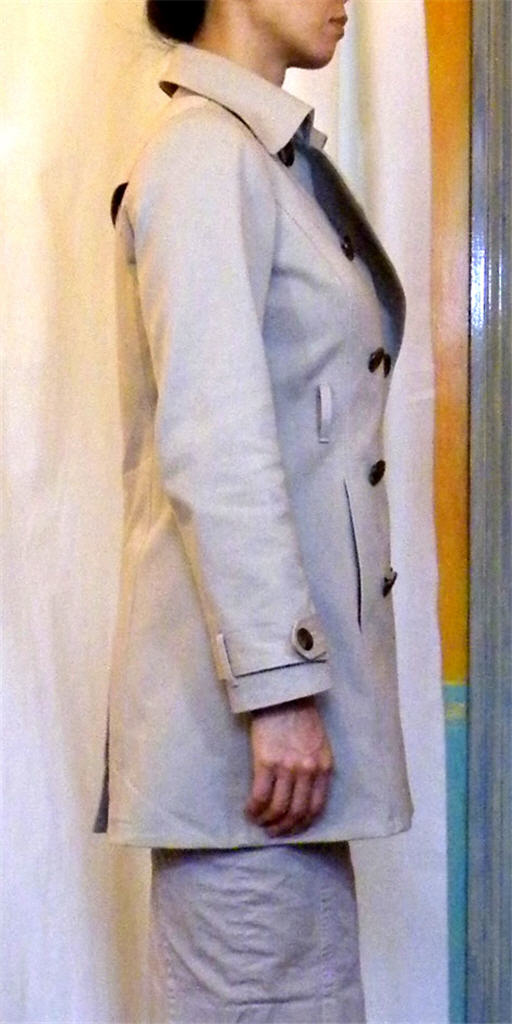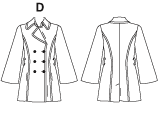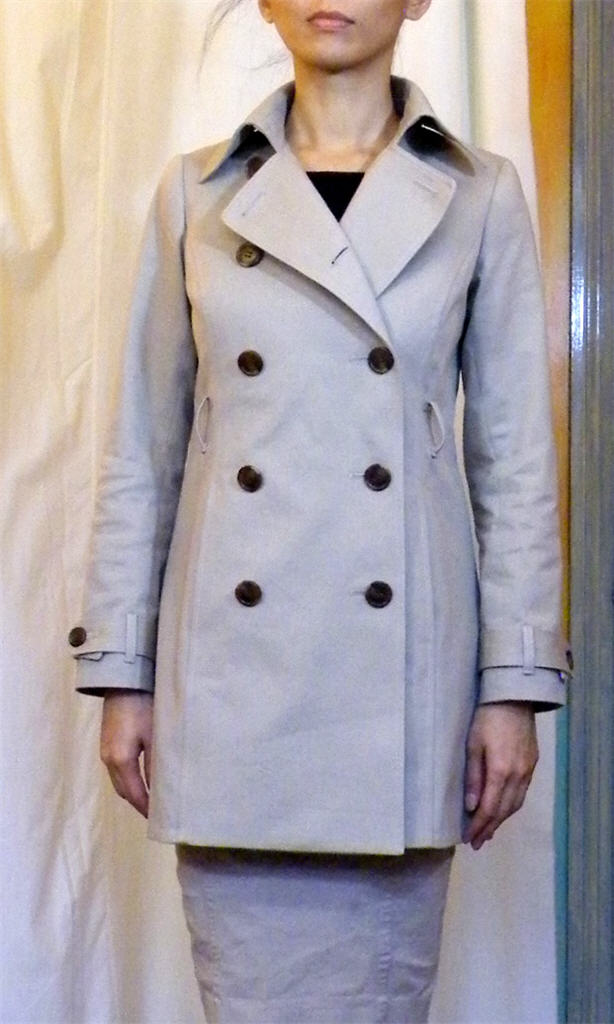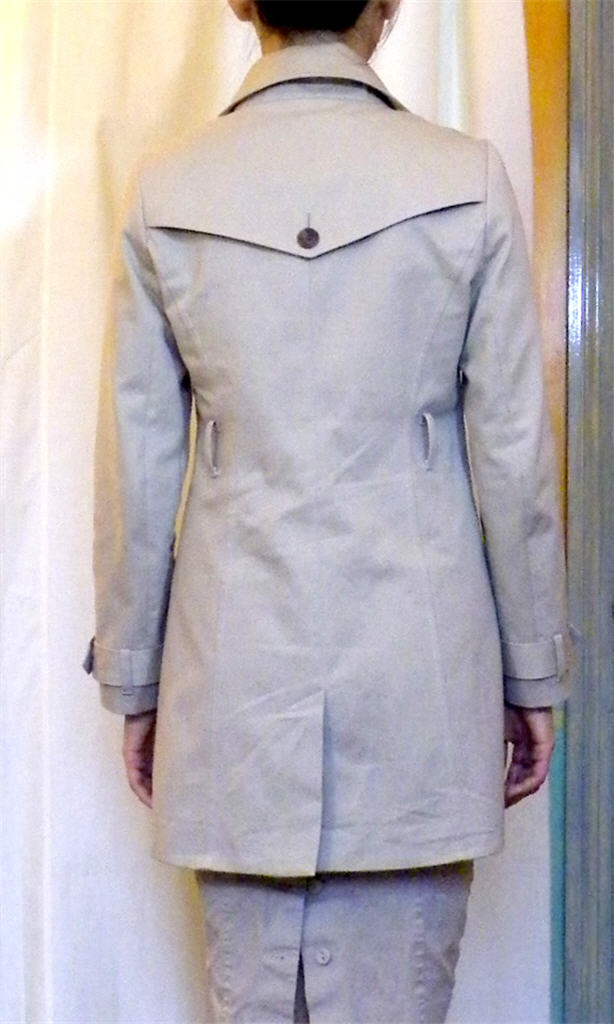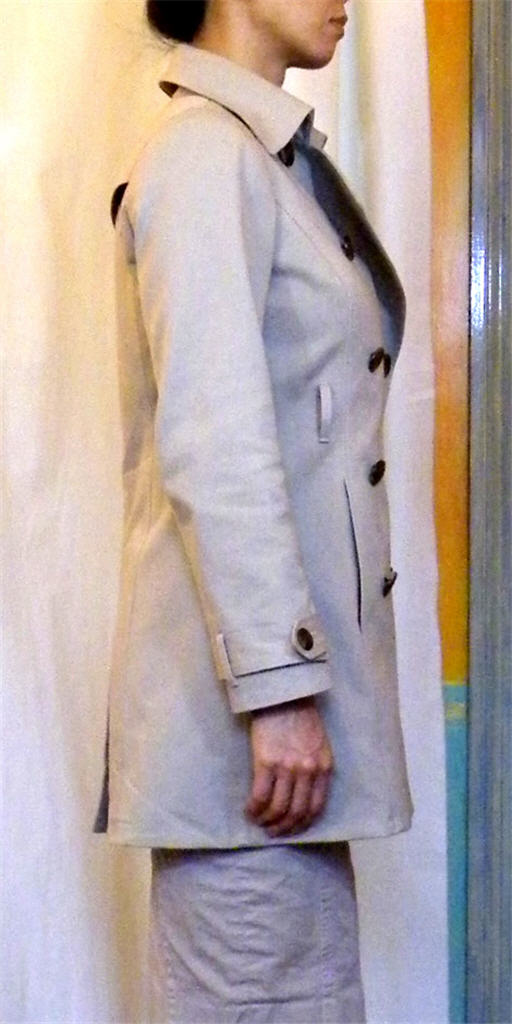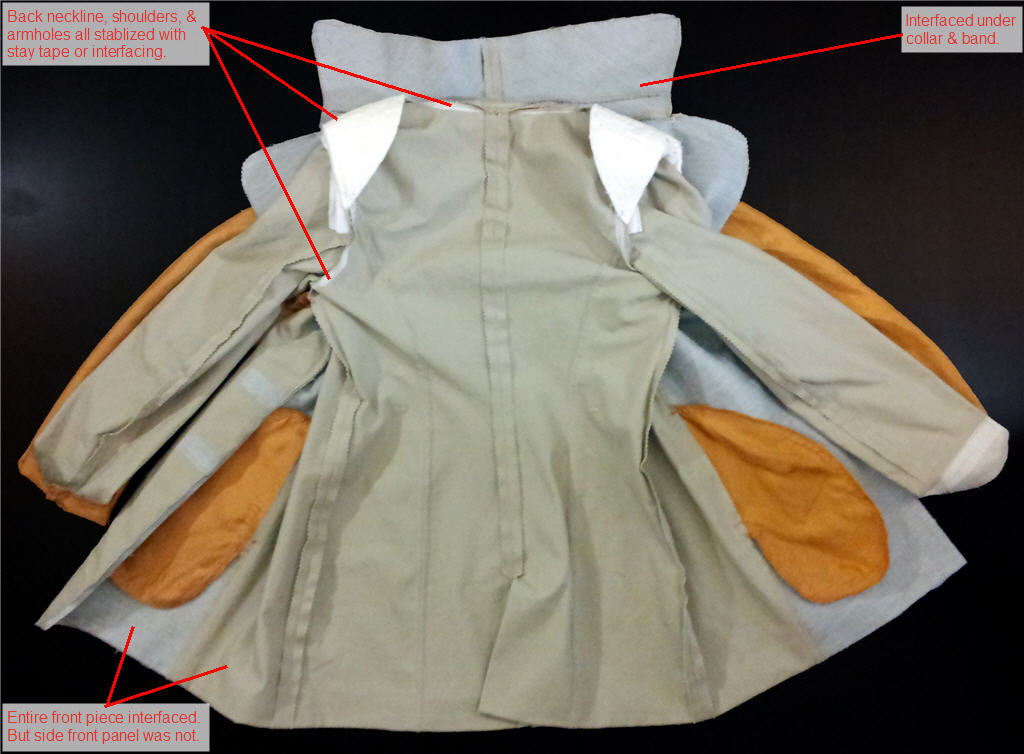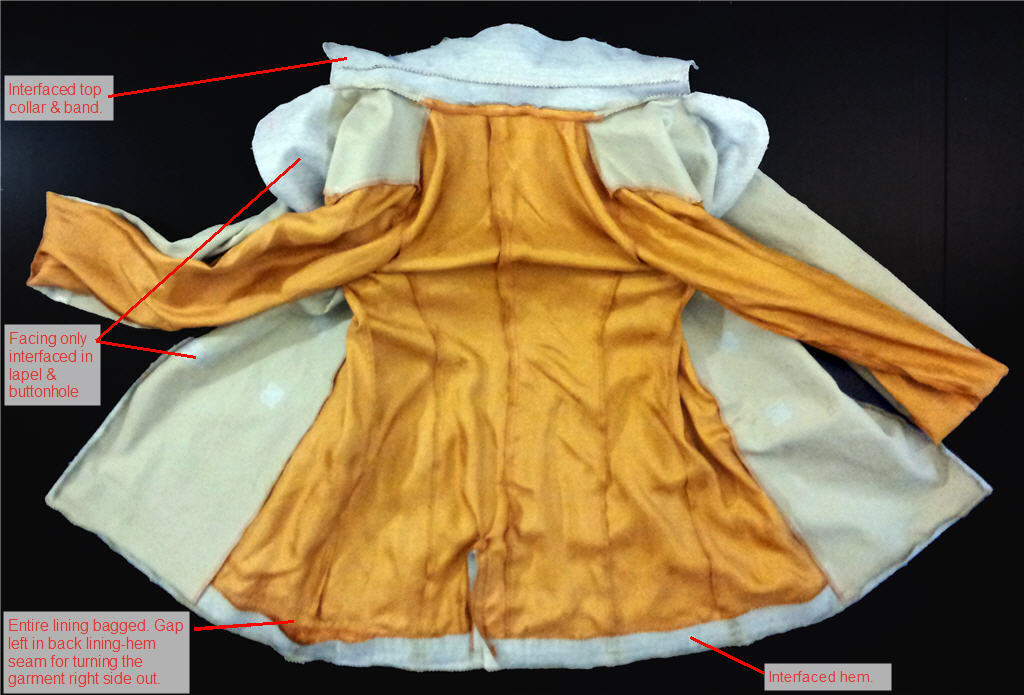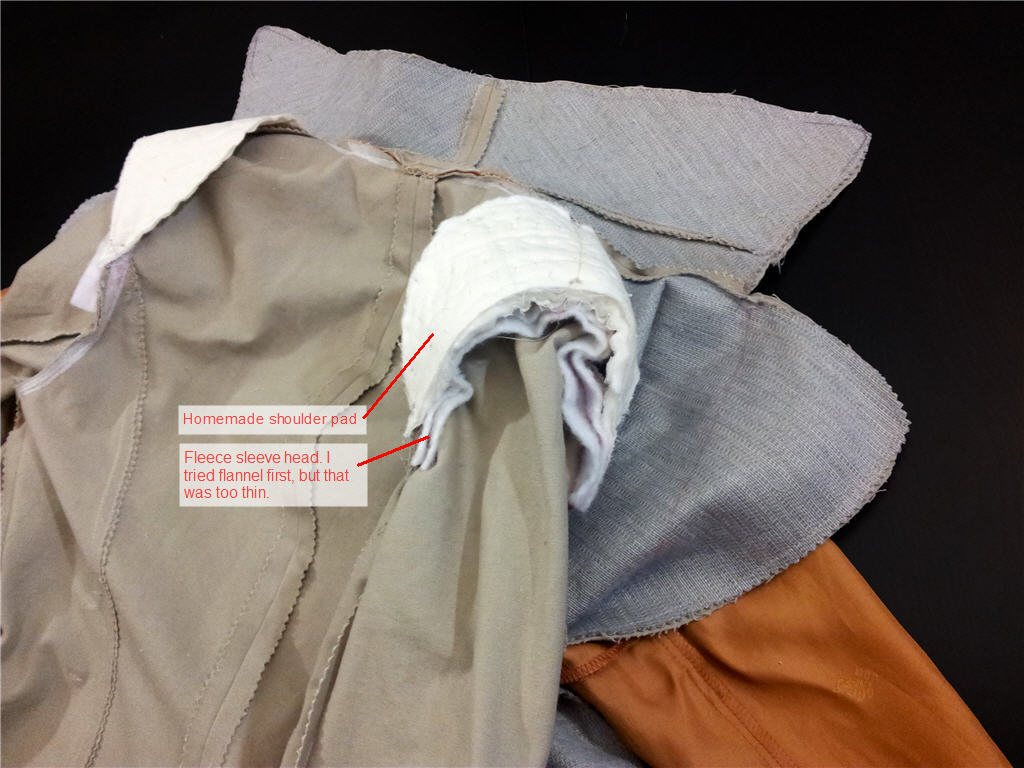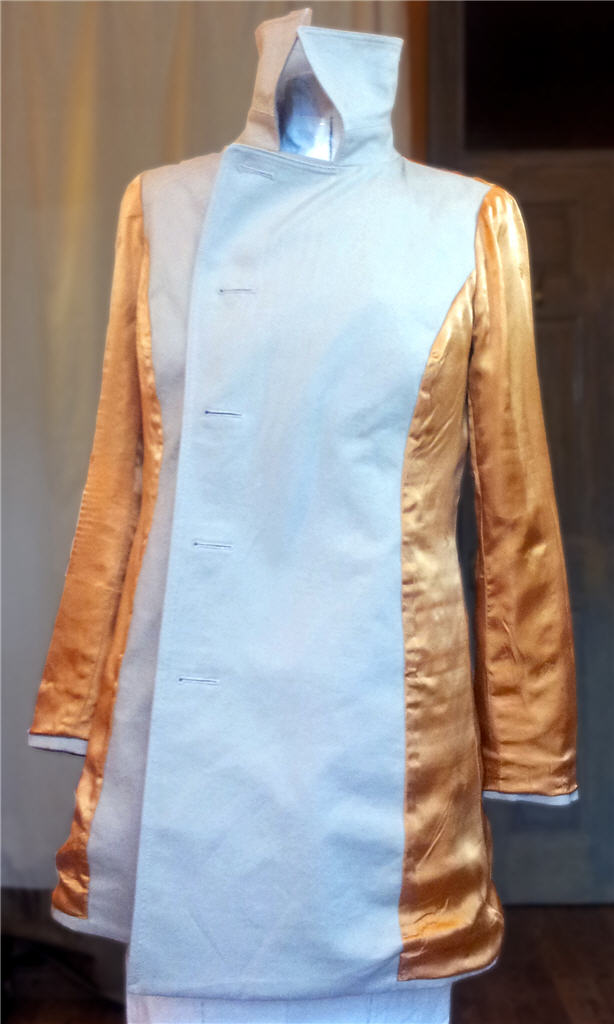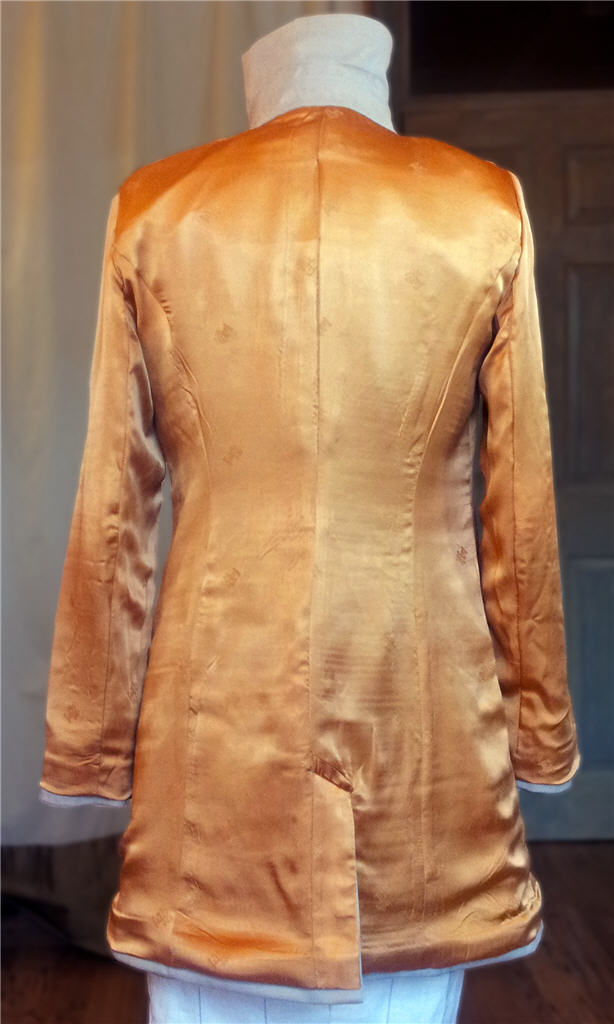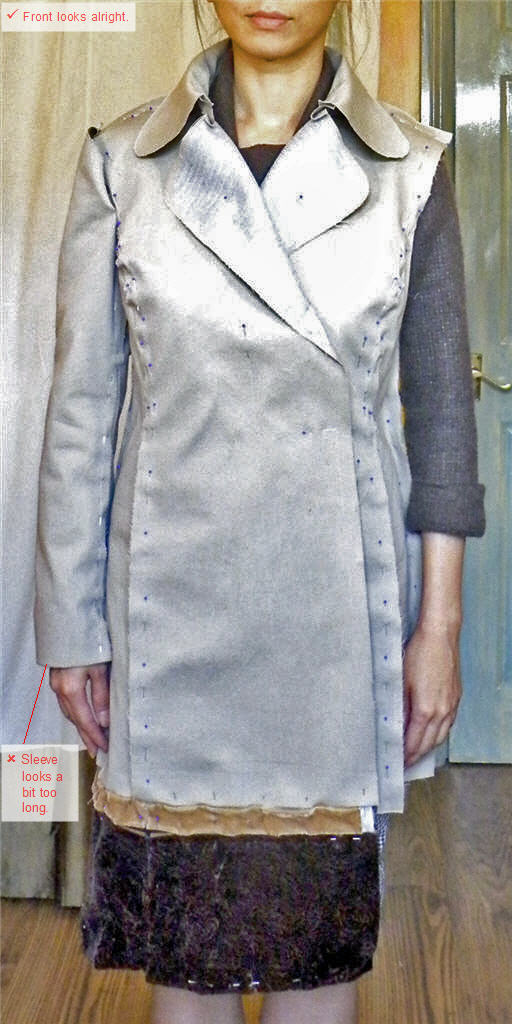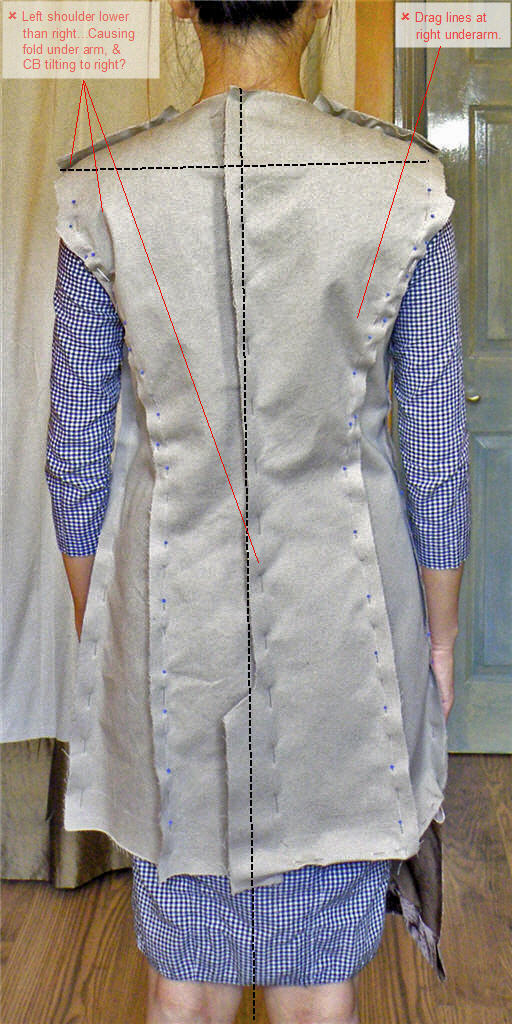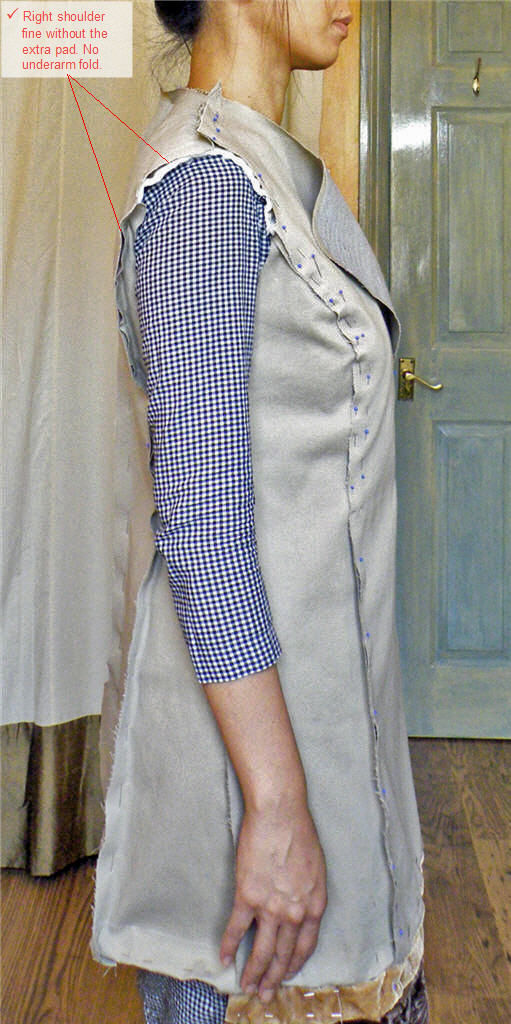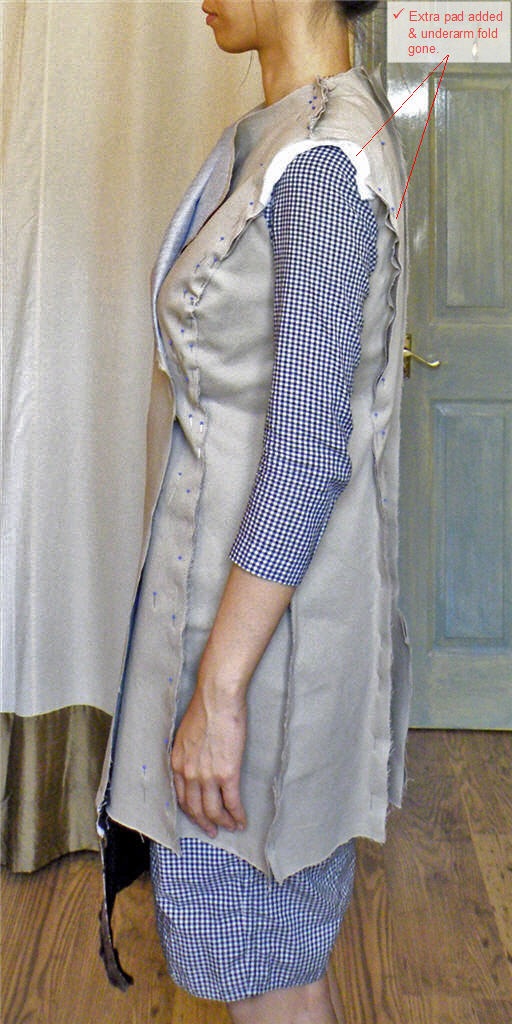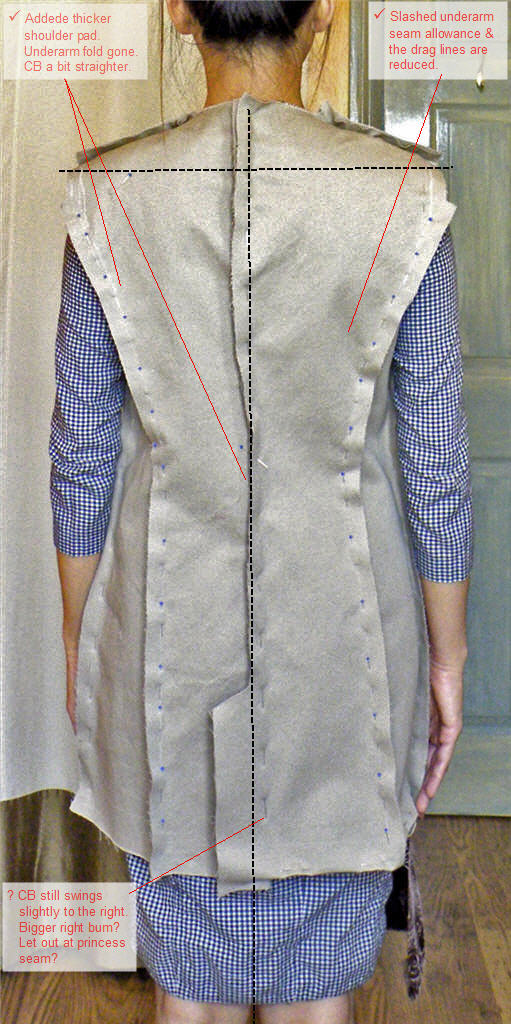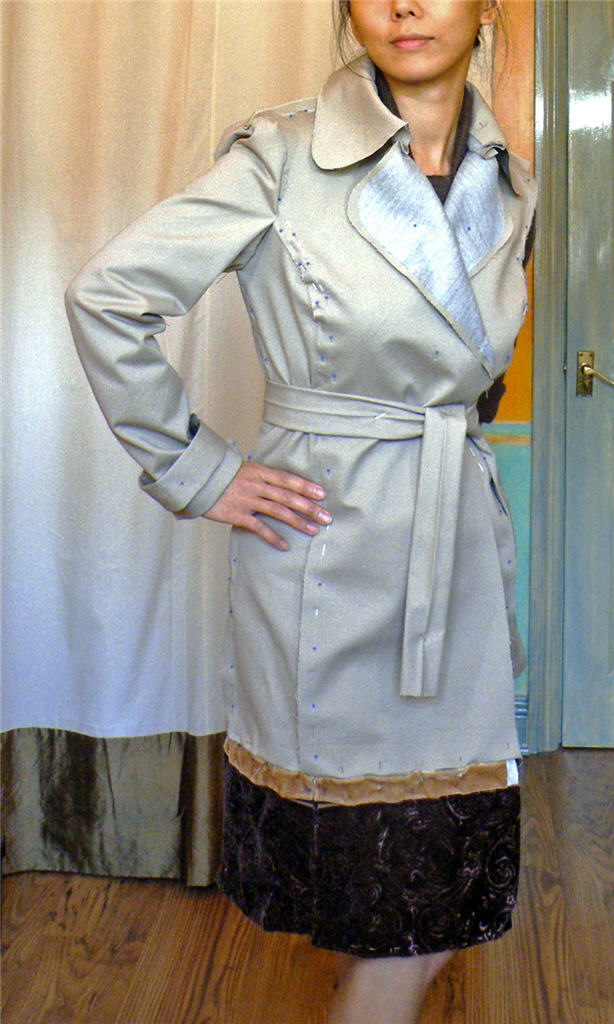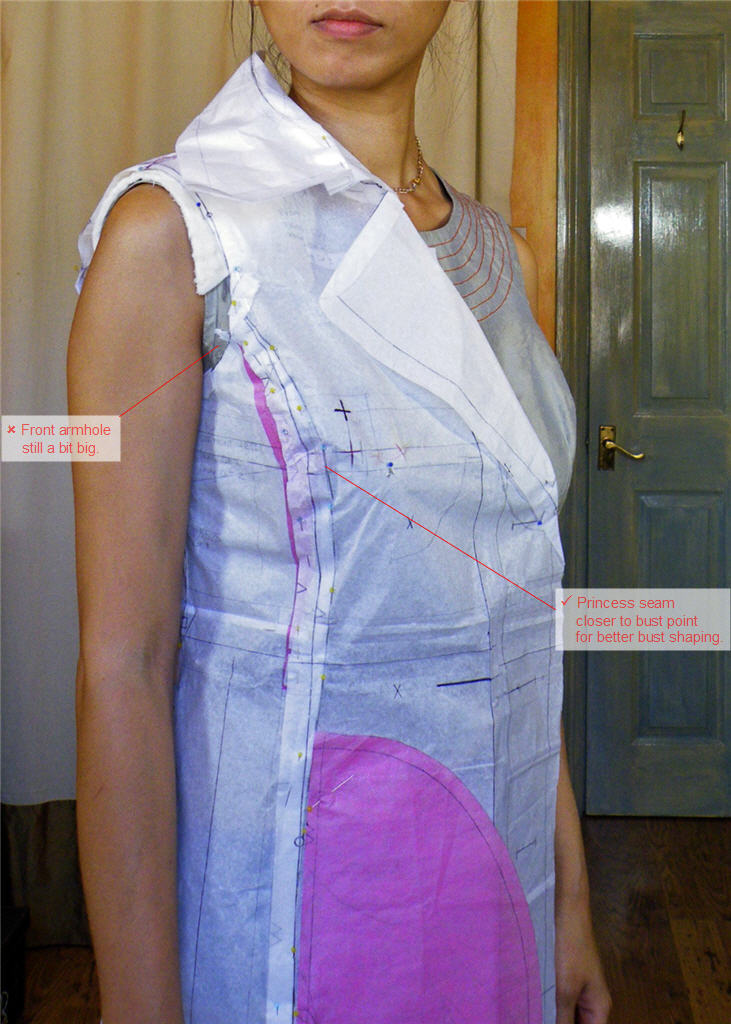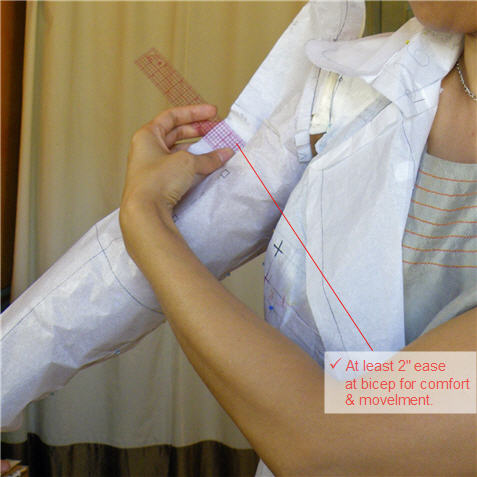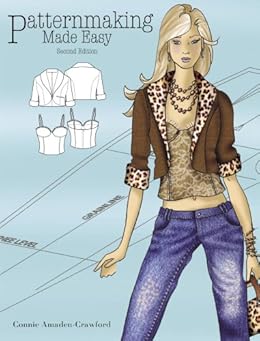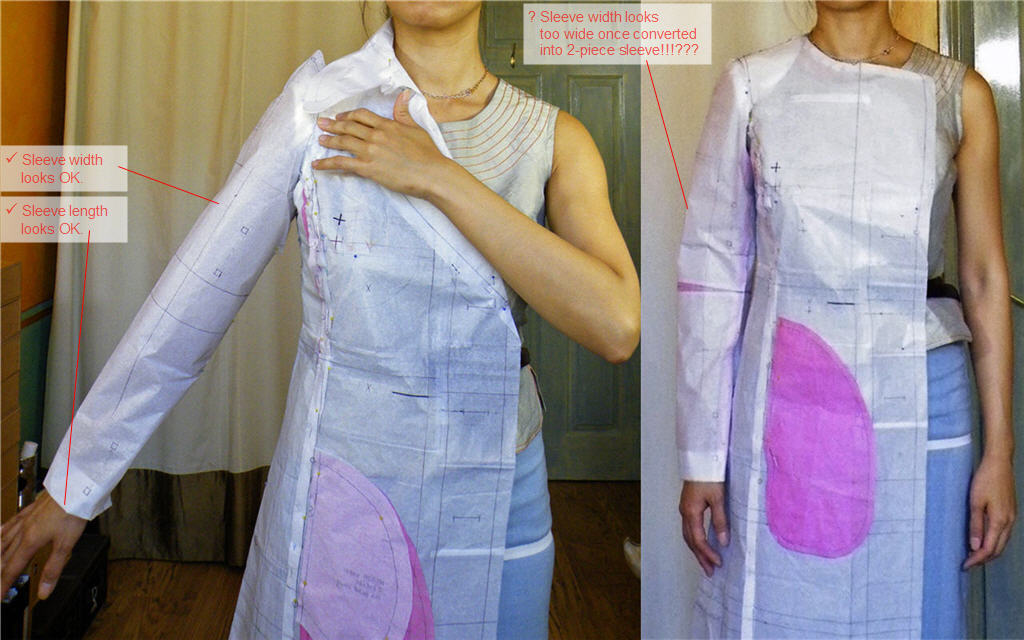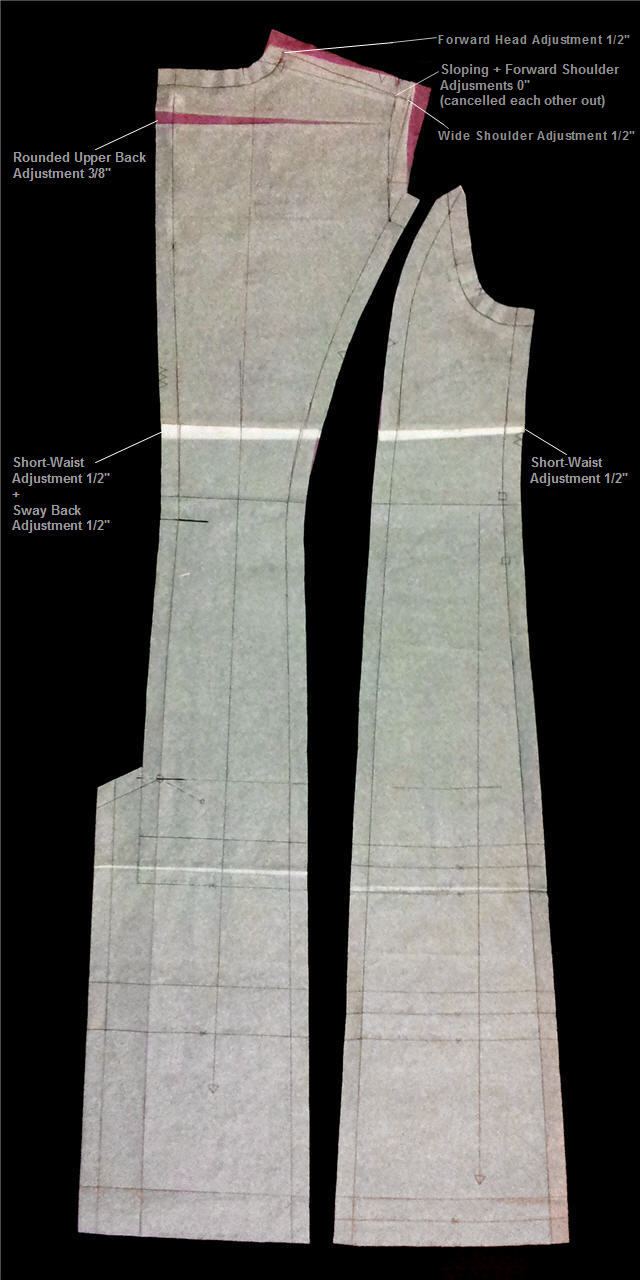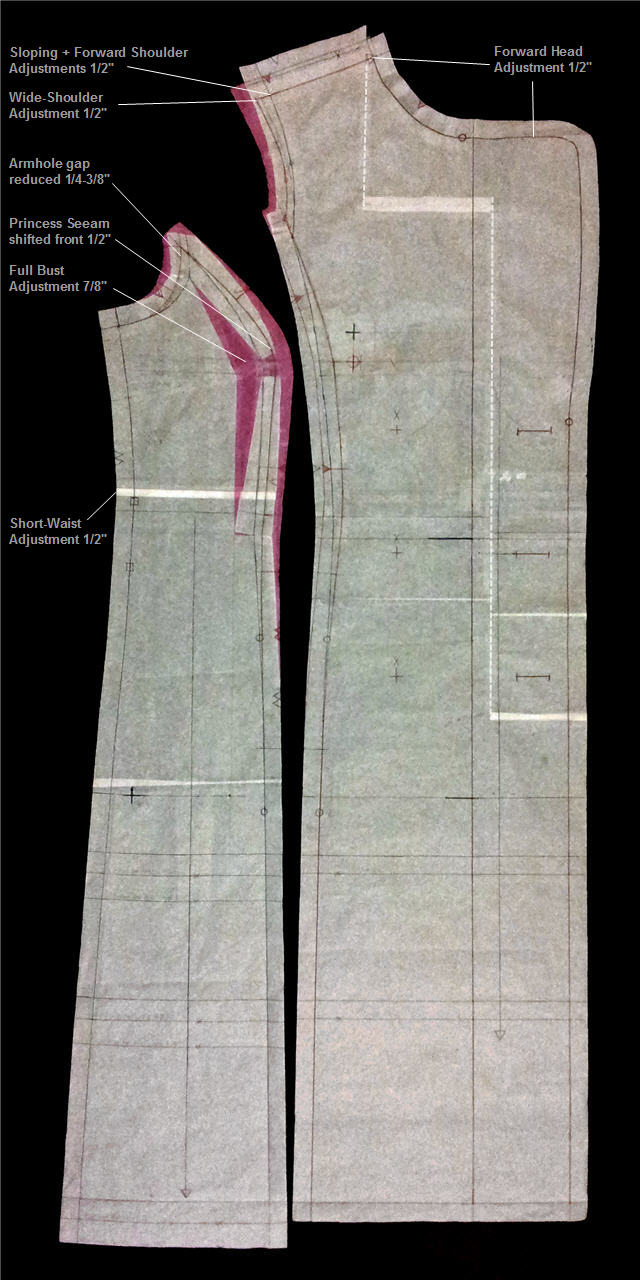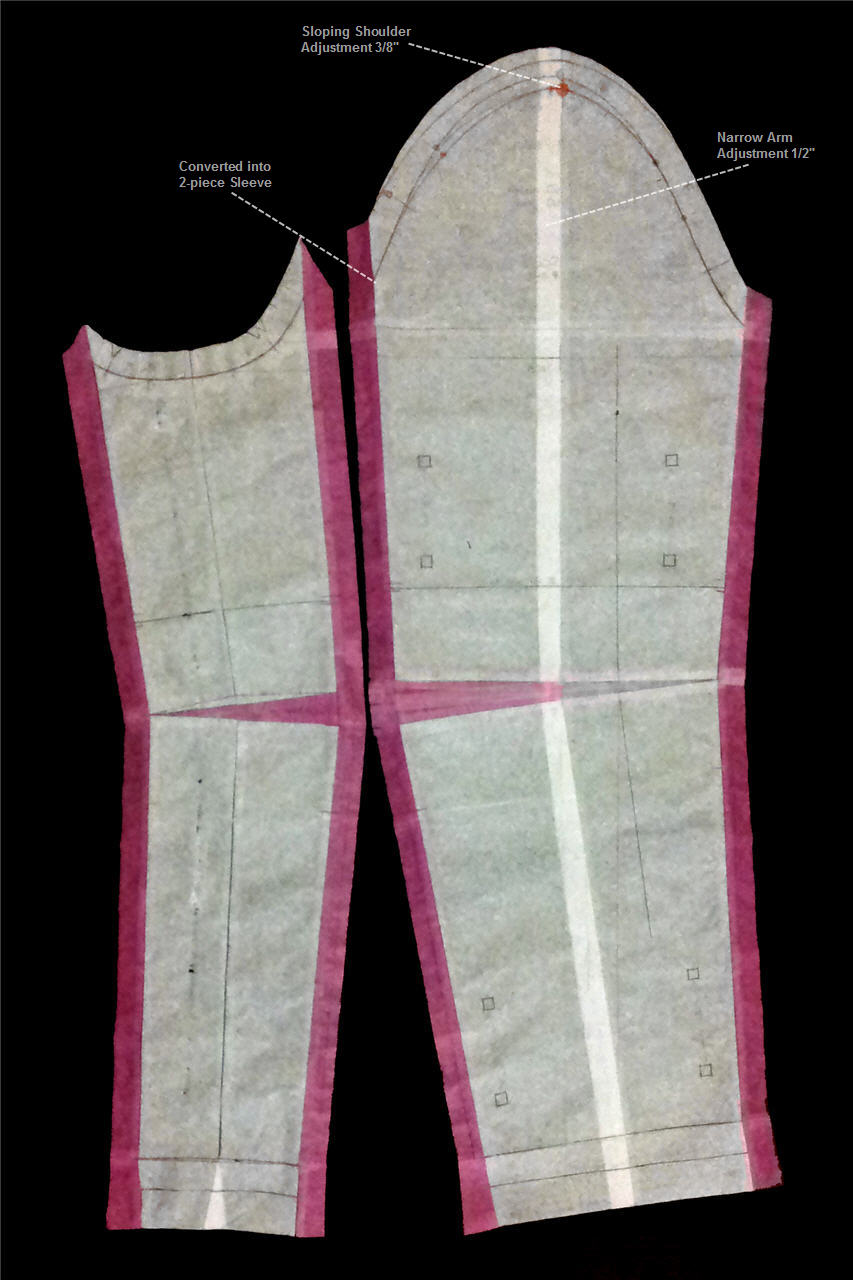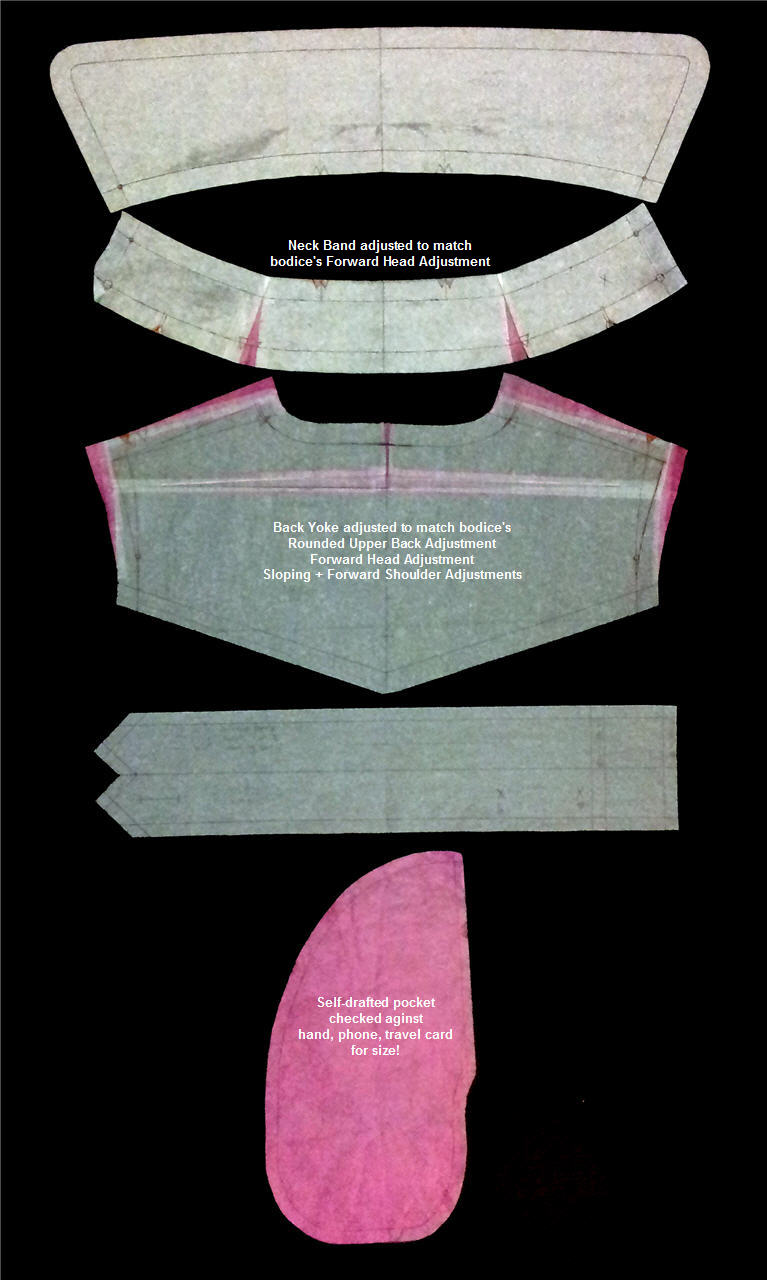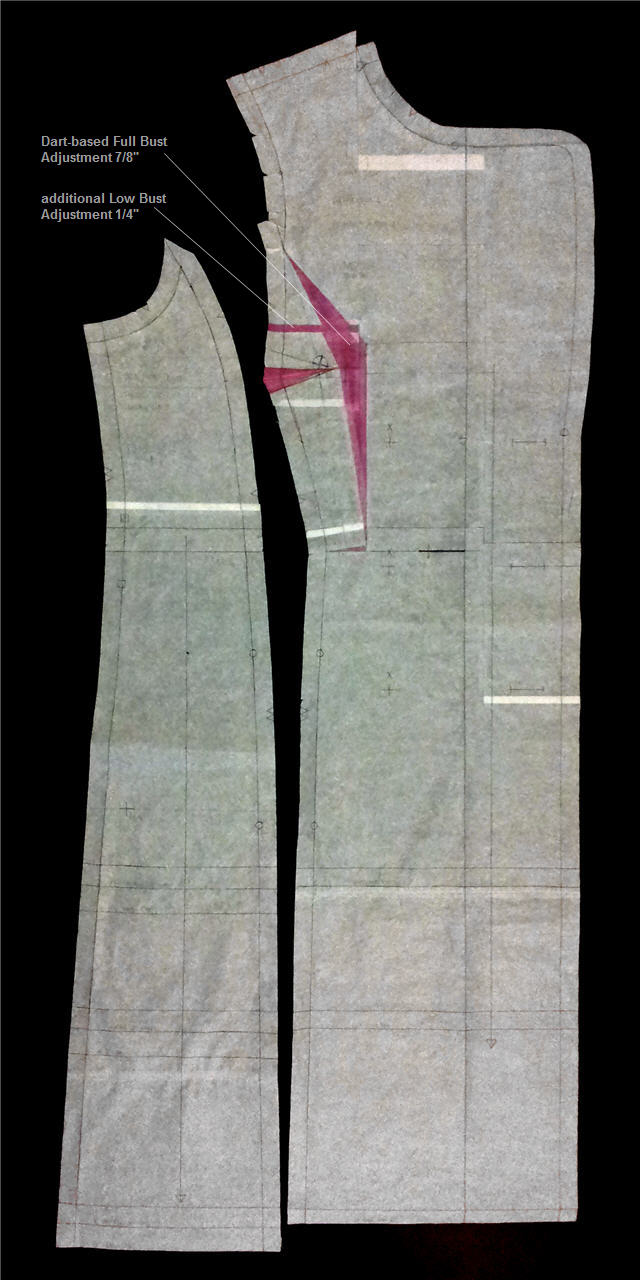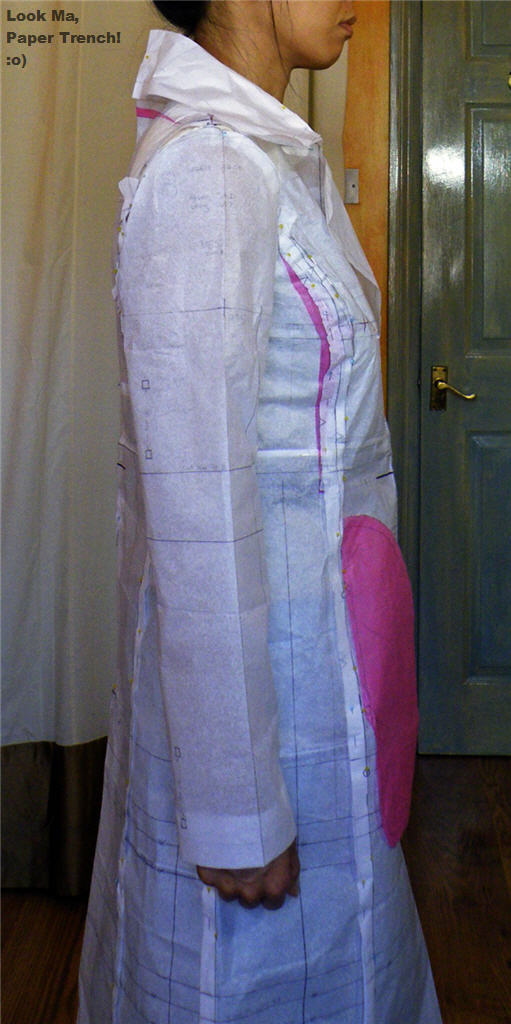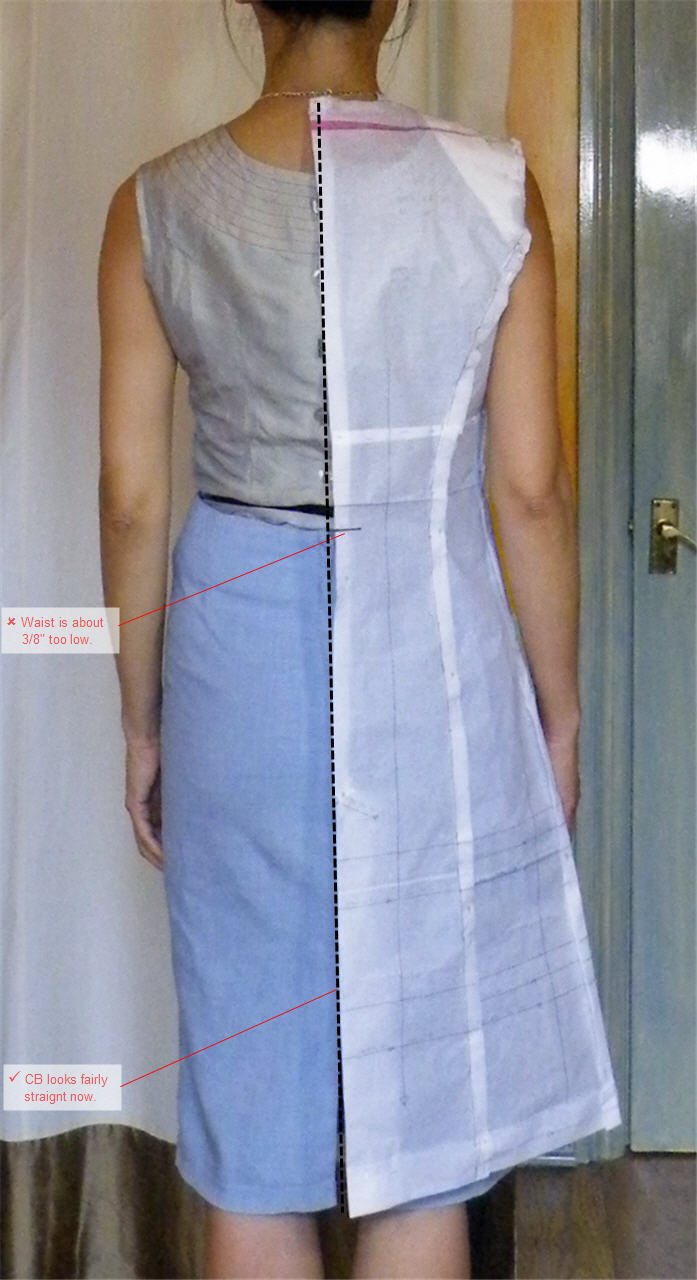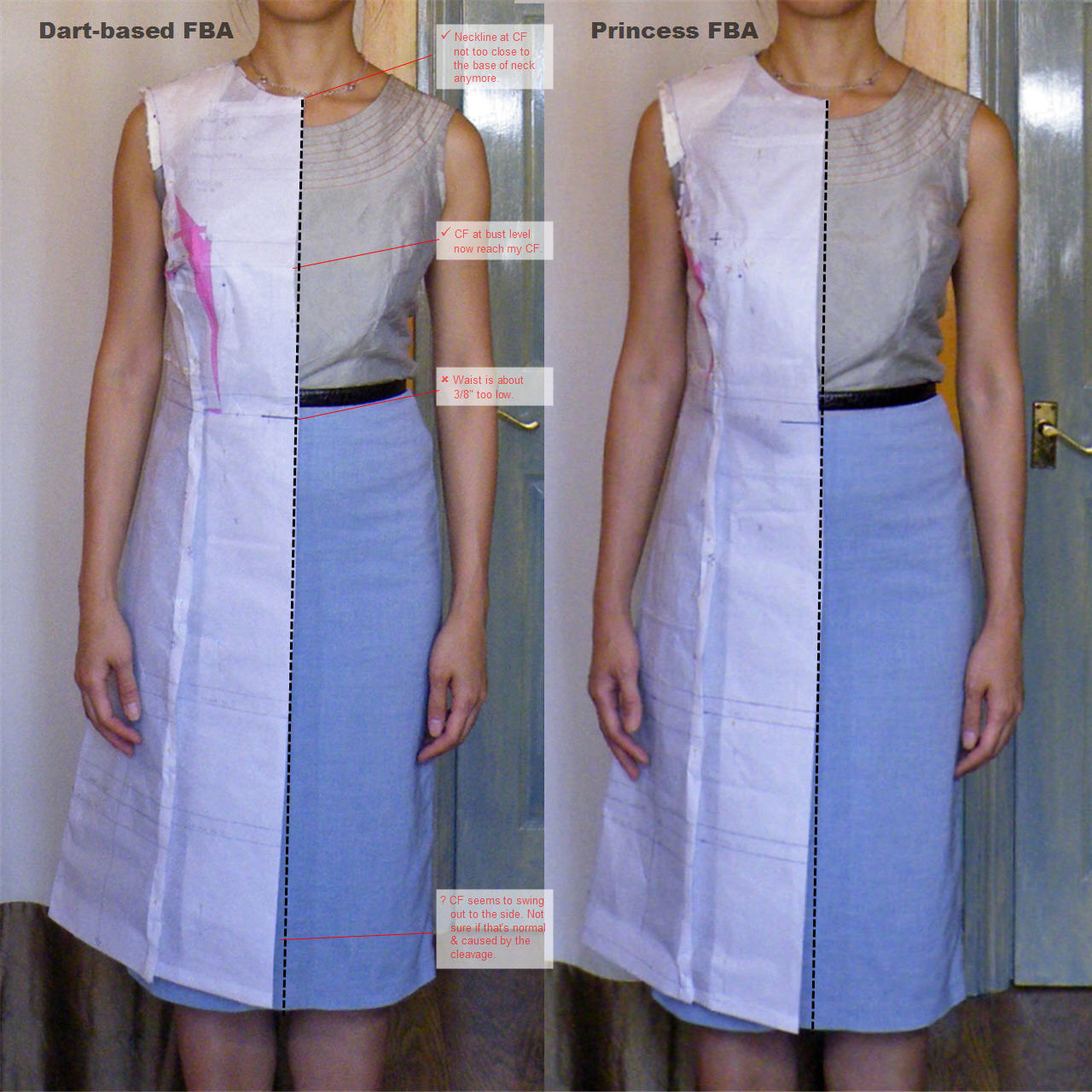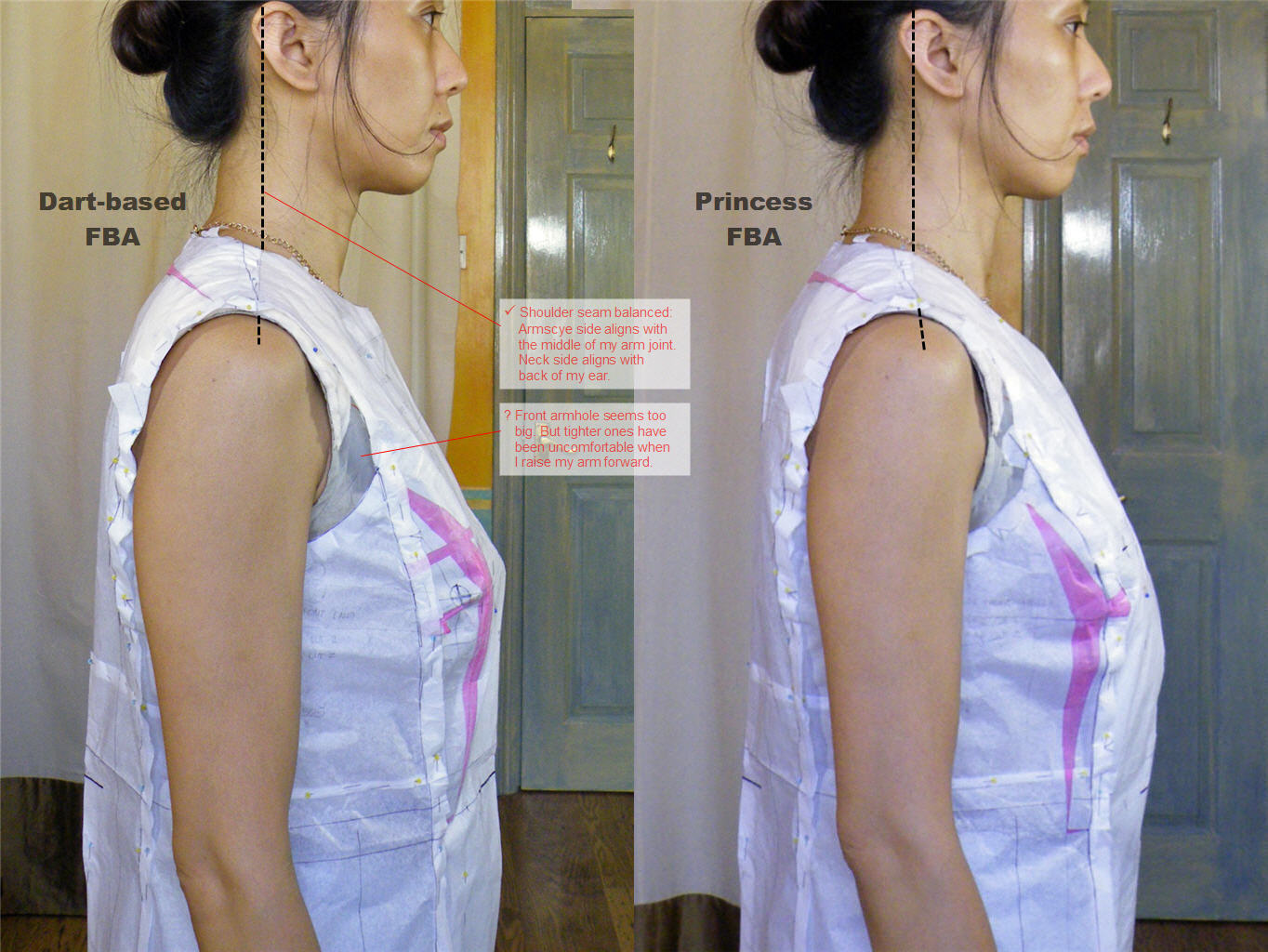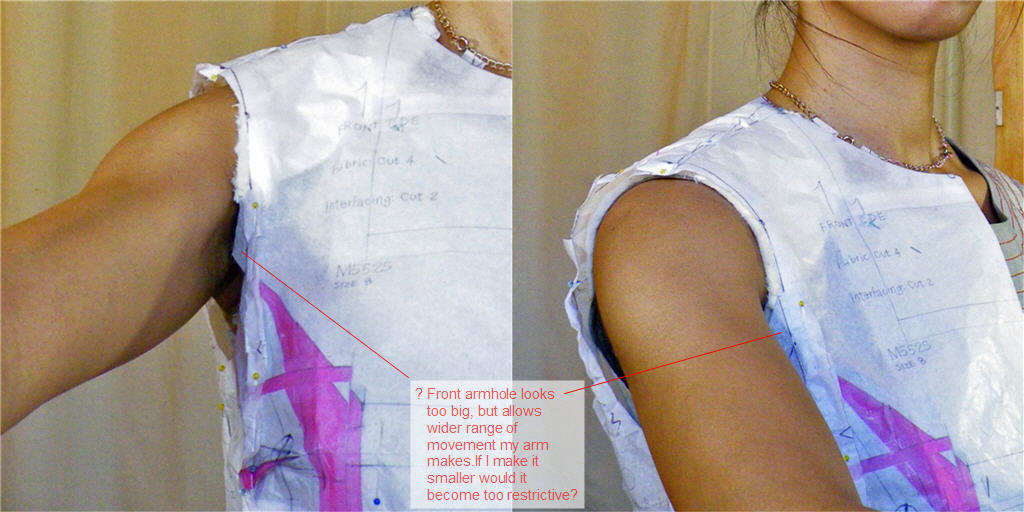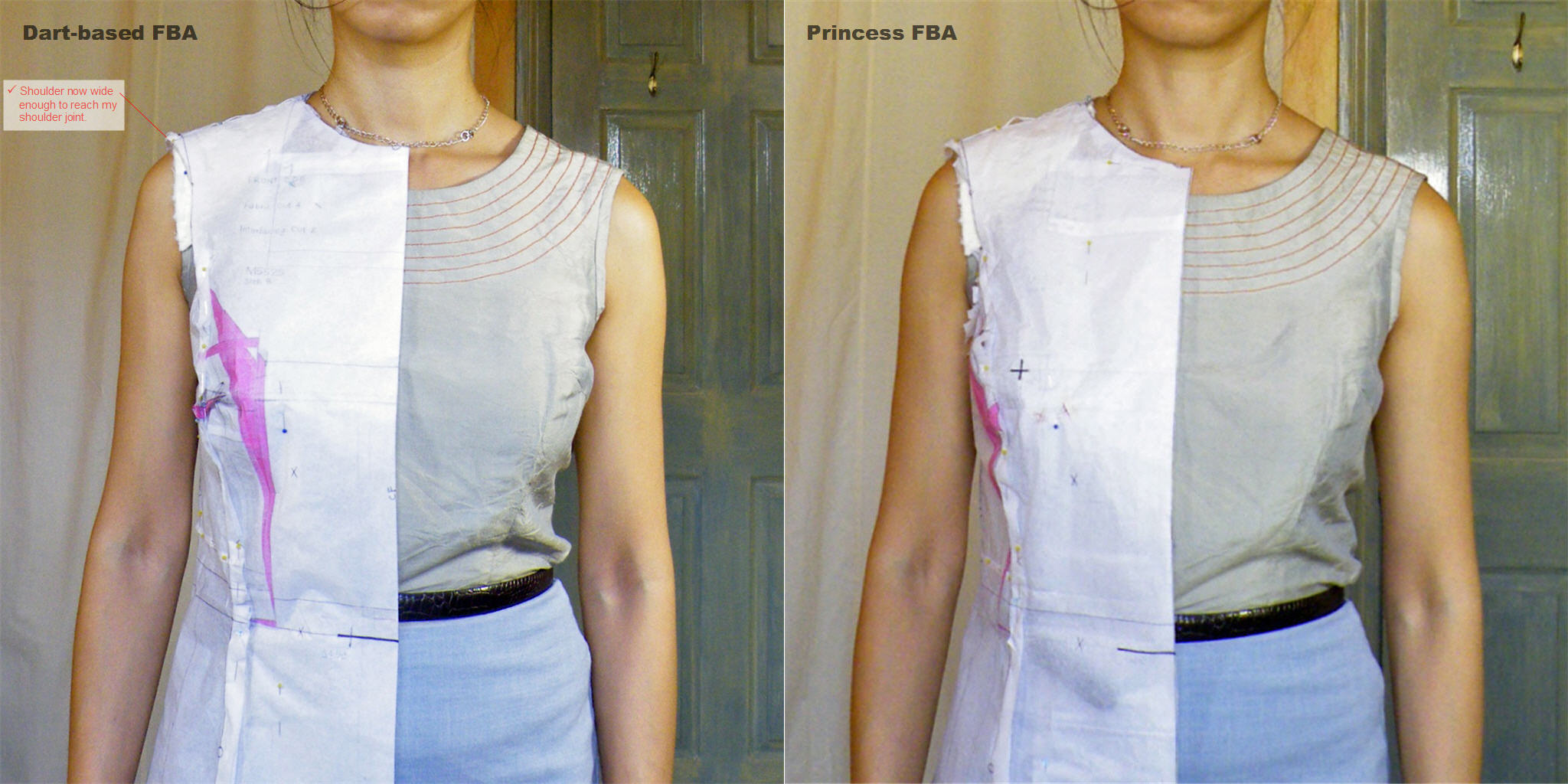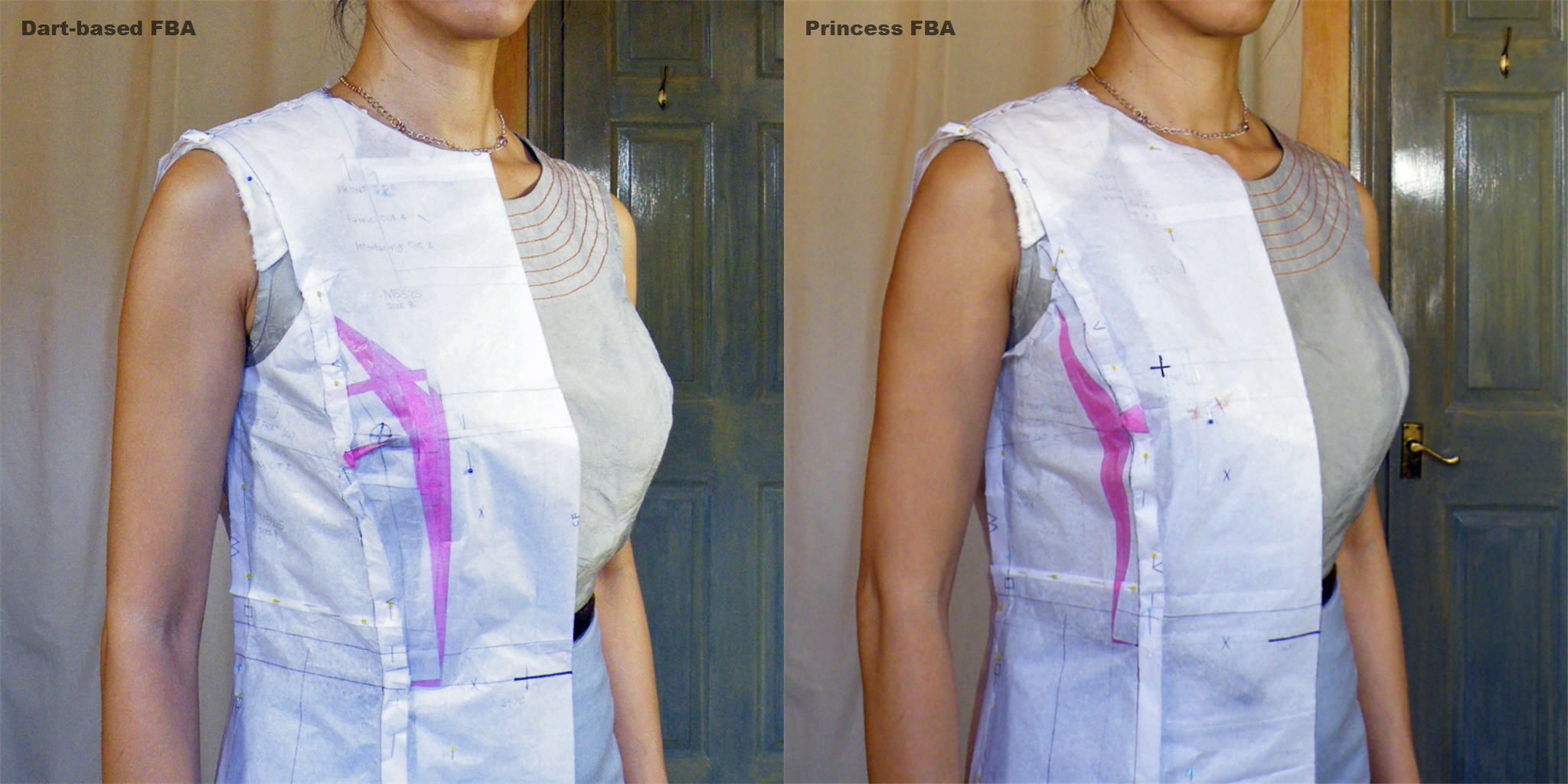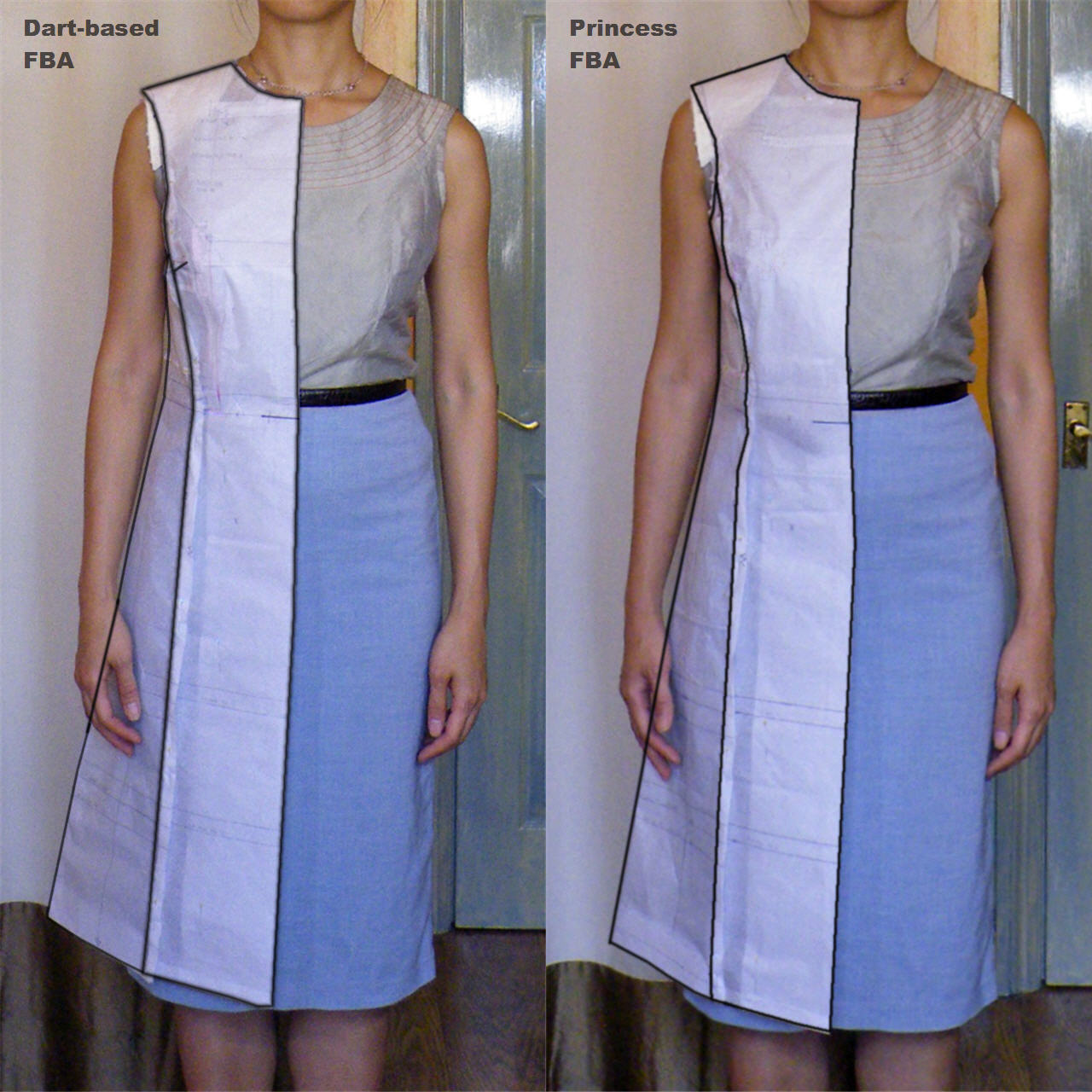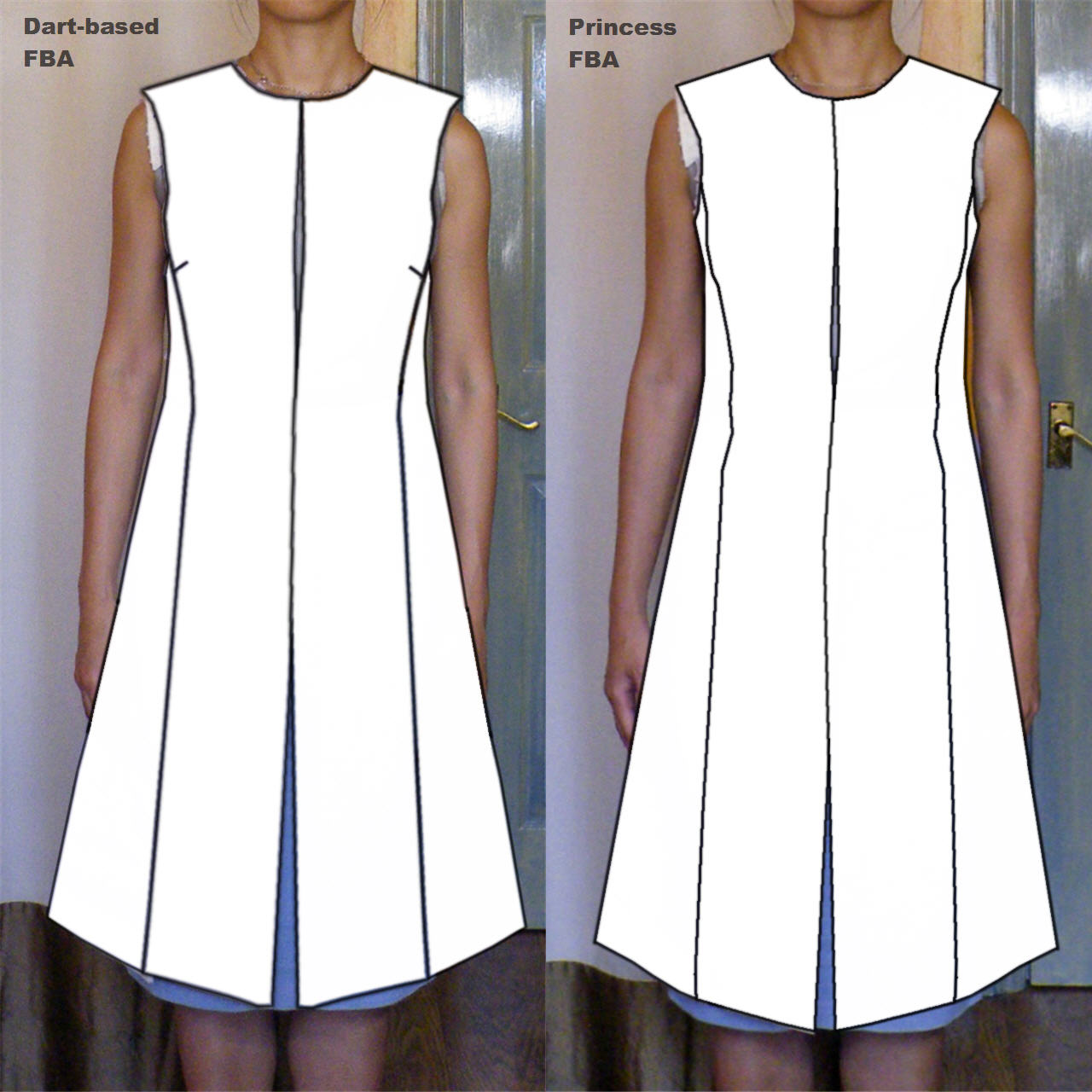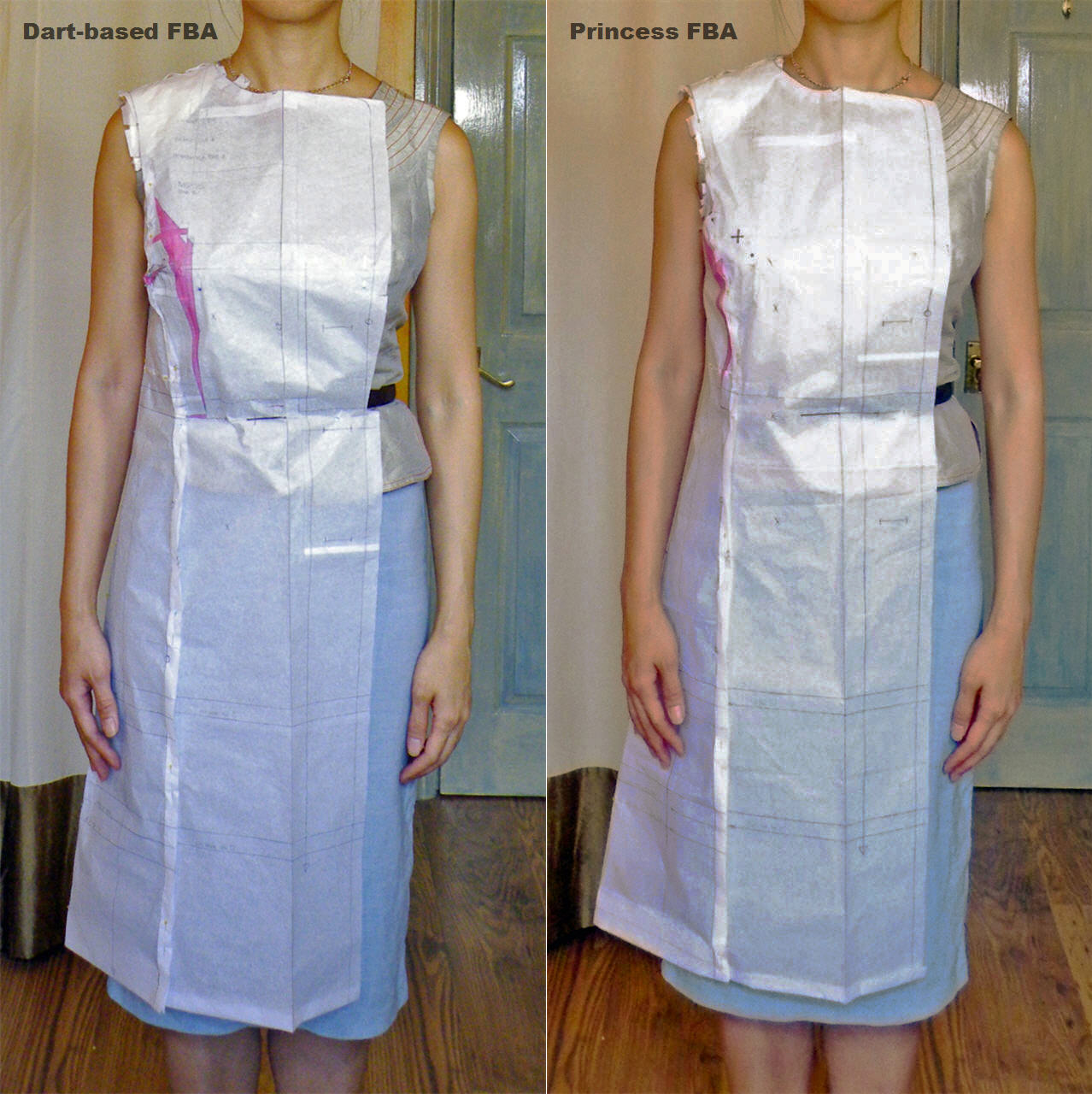Hurrah it’s all done. Well, at least a very wearable muslin is.
Let’s first charm you with the pretty pictures before I start boring you with nearly two weeks’ construction (& fitting) details
The Inspiration & Pattern recap
Style Shots & Mug Shots
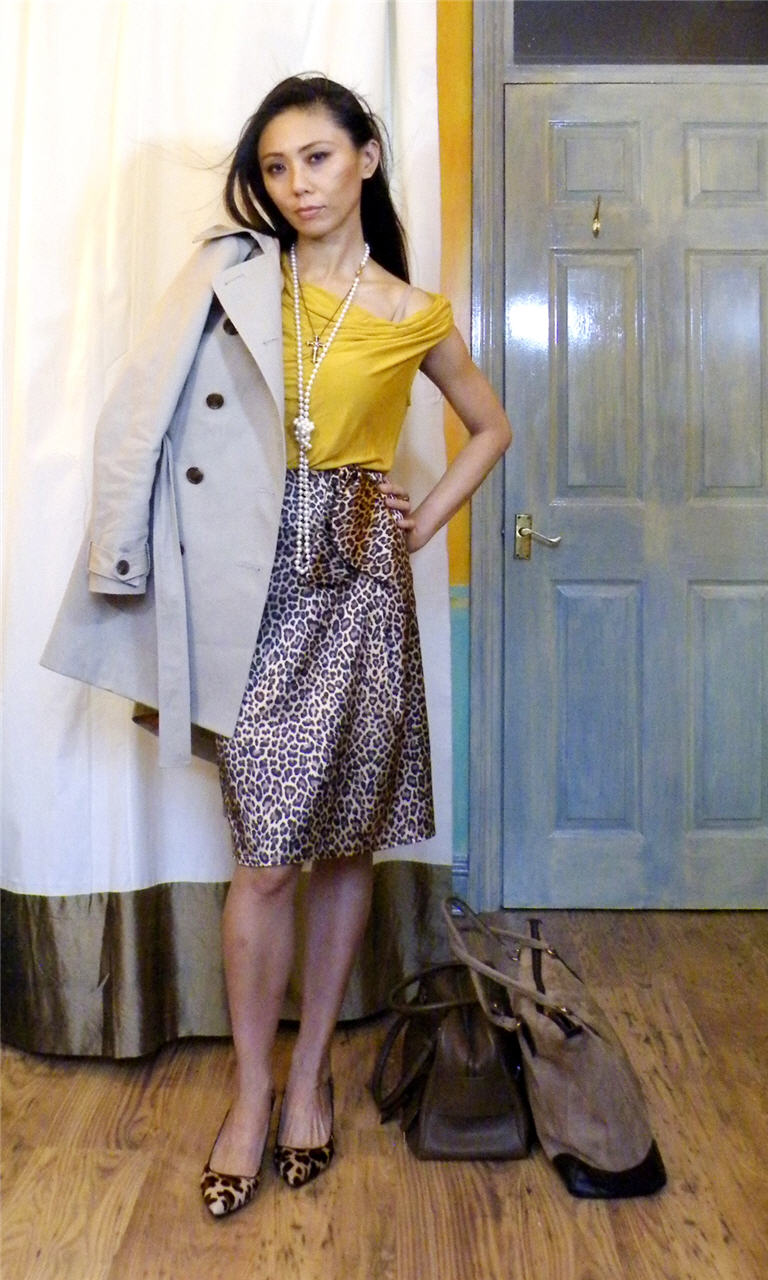

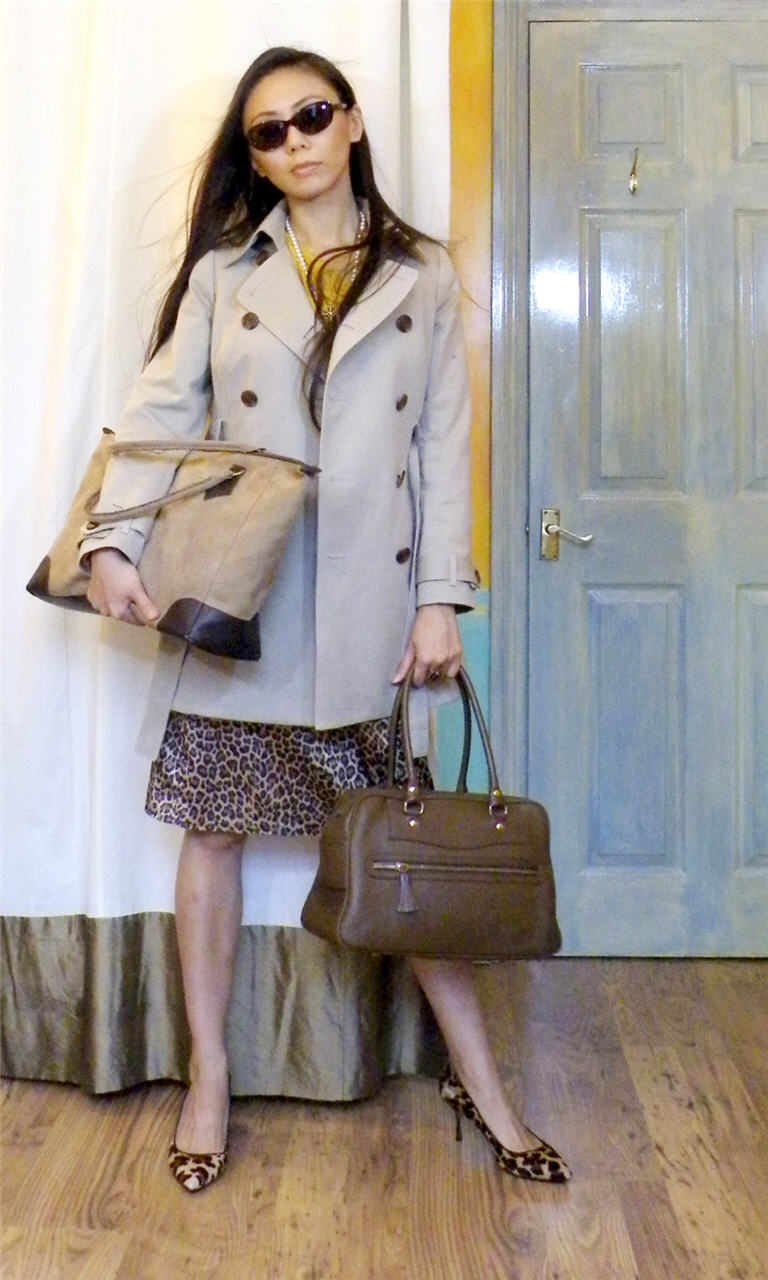
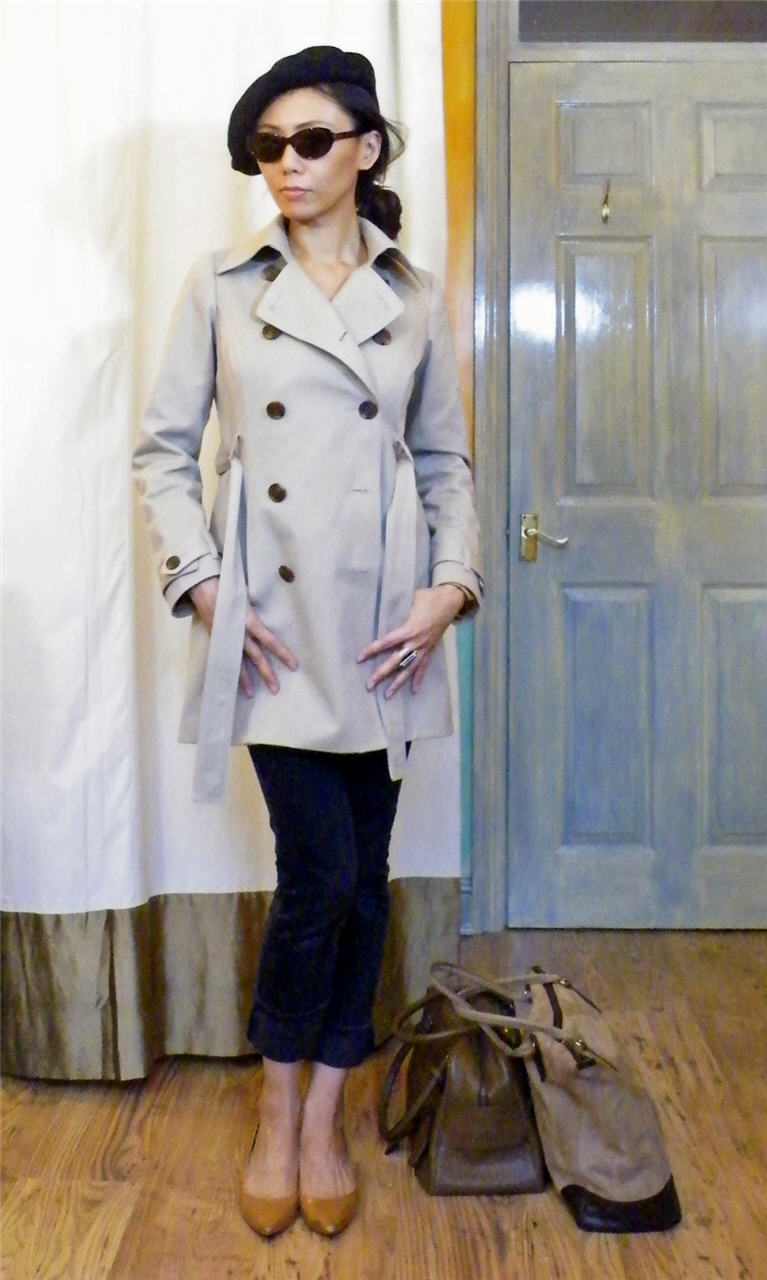
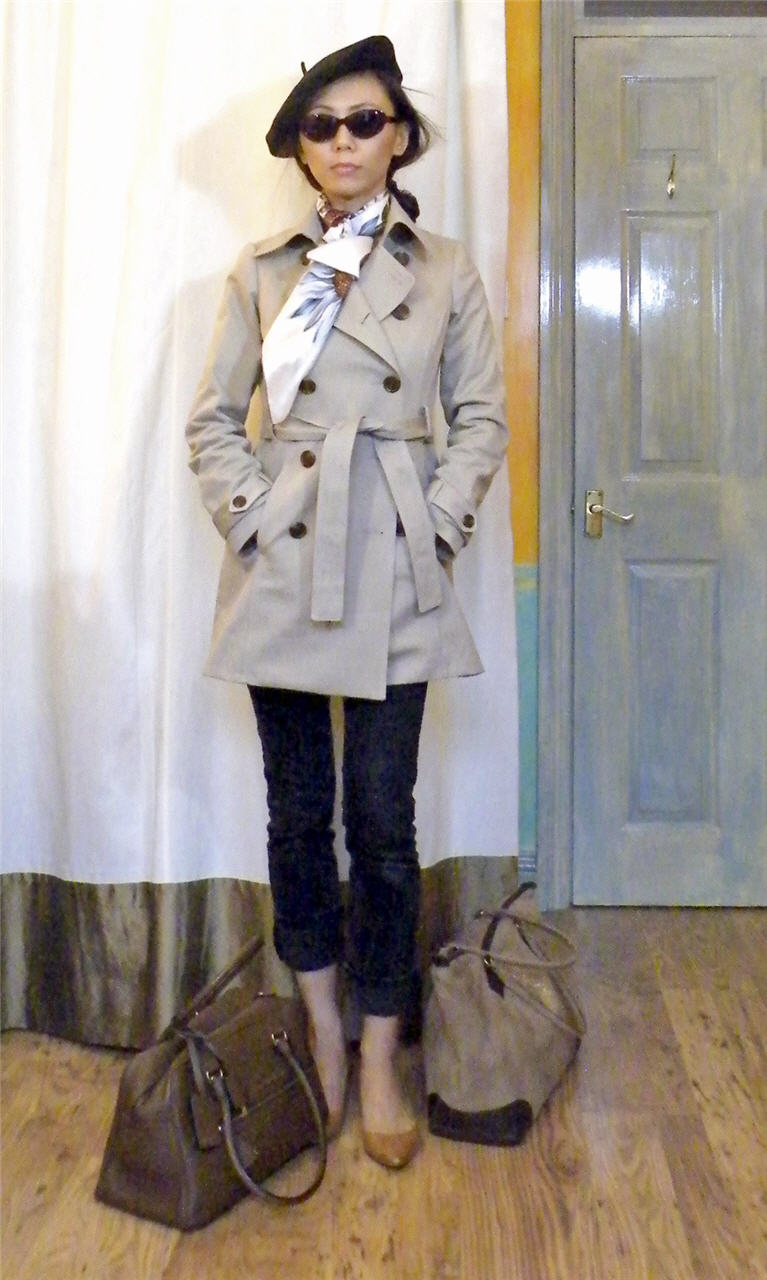
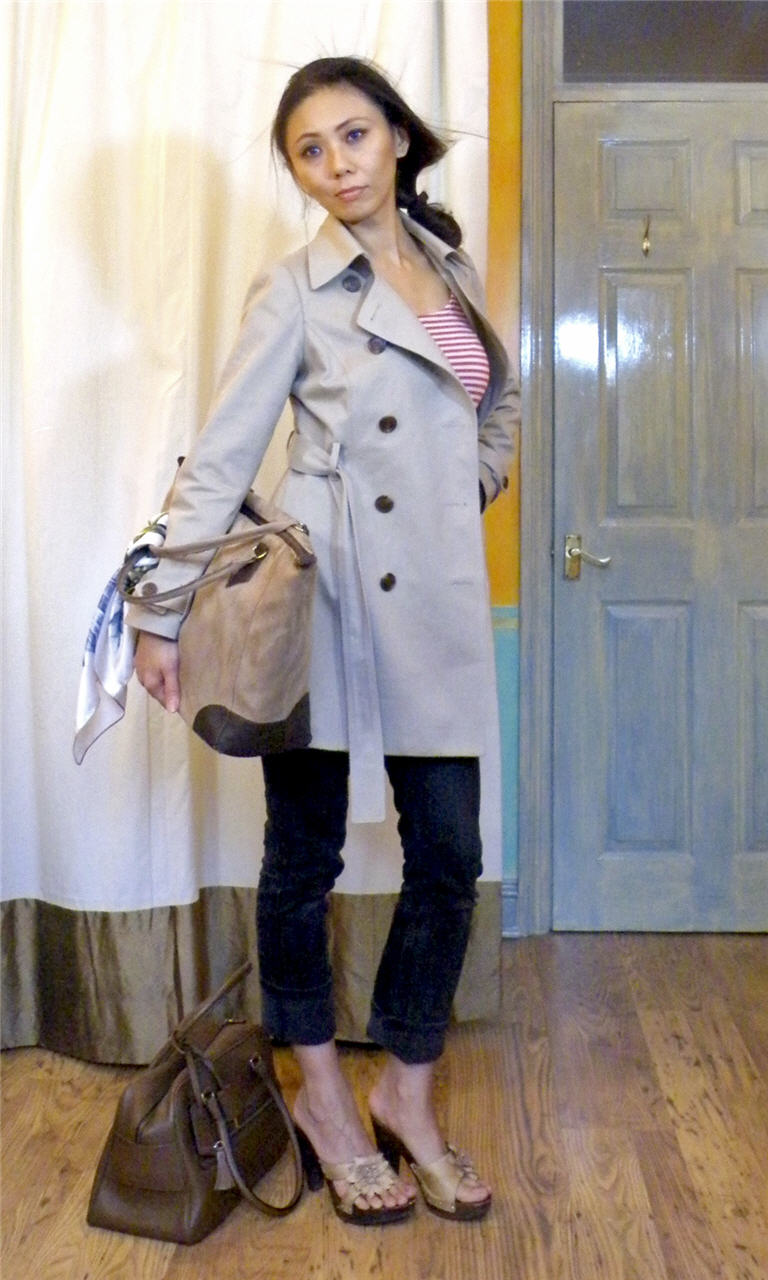
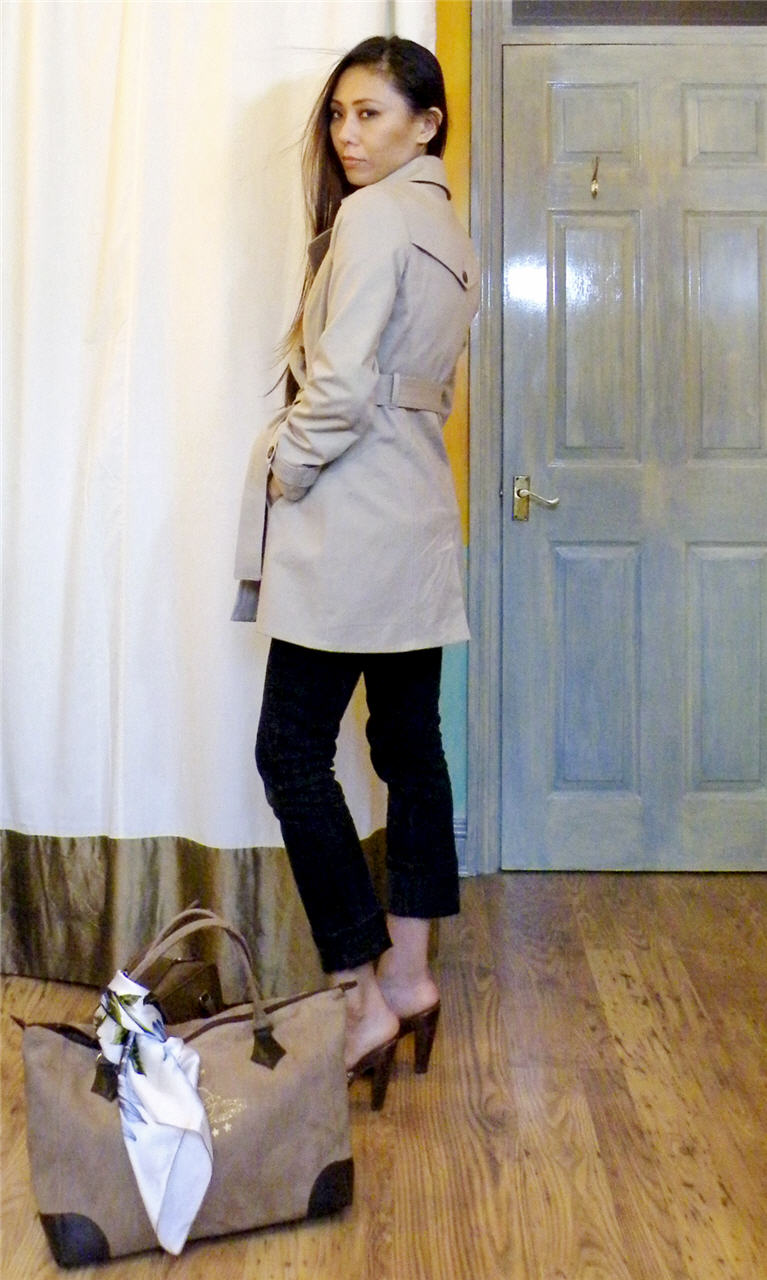
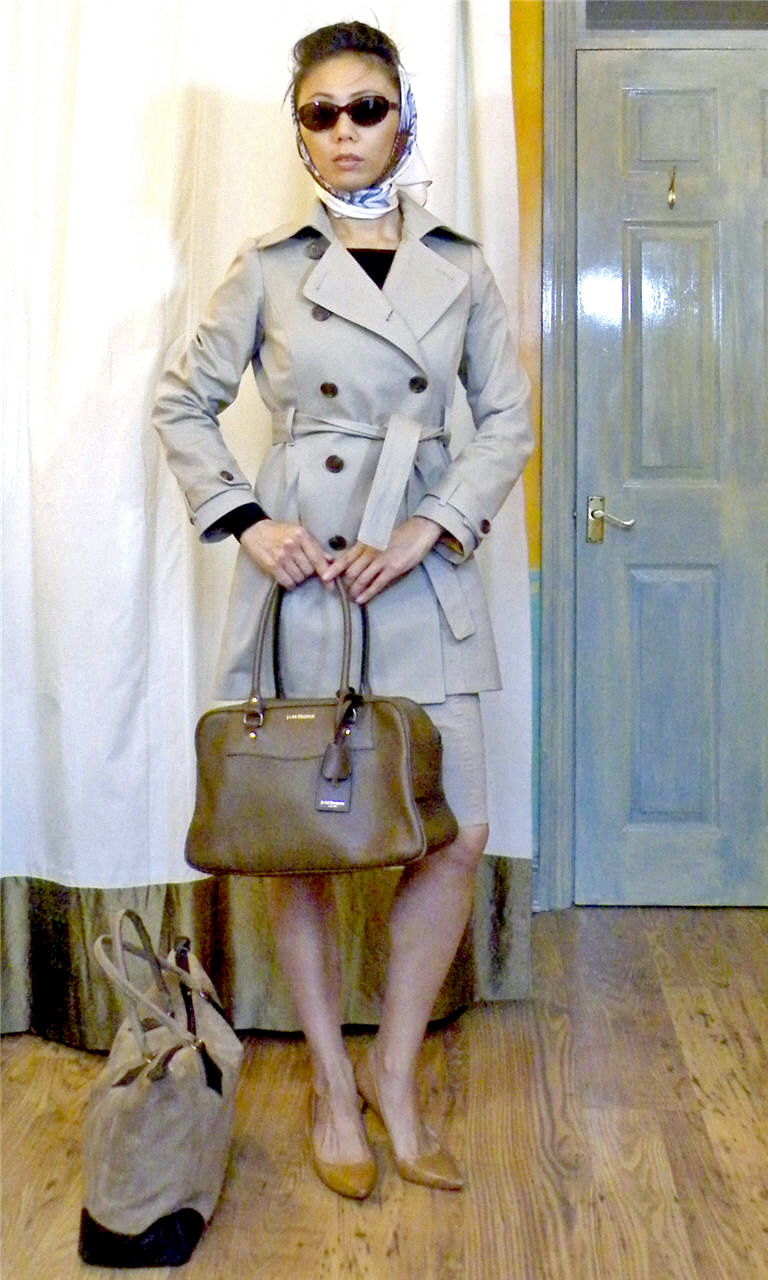
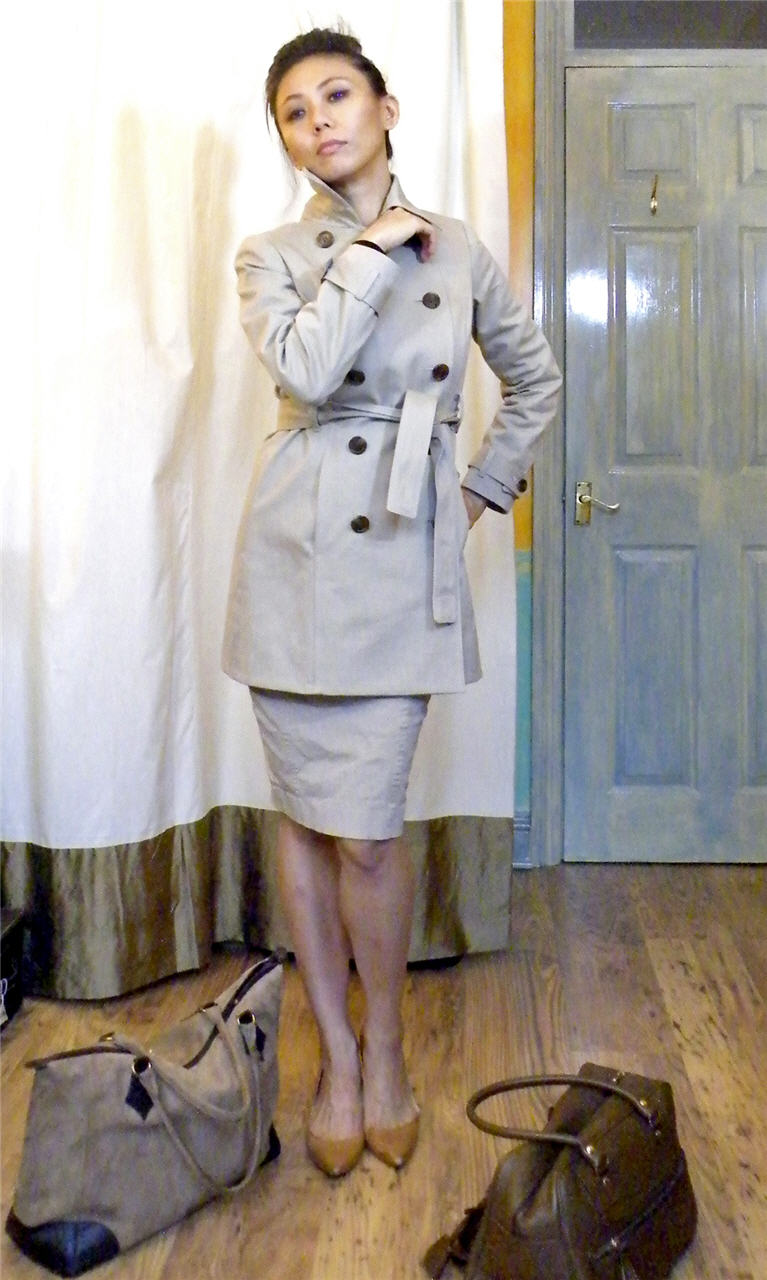
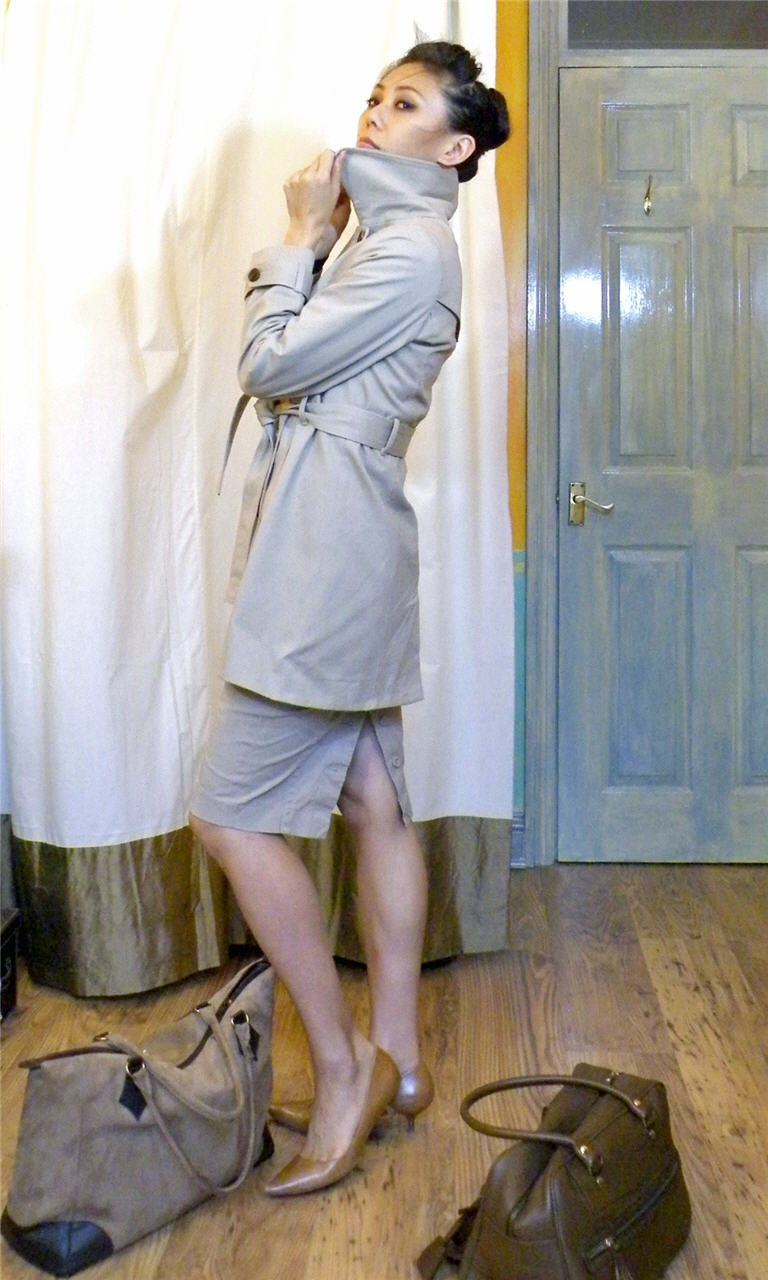
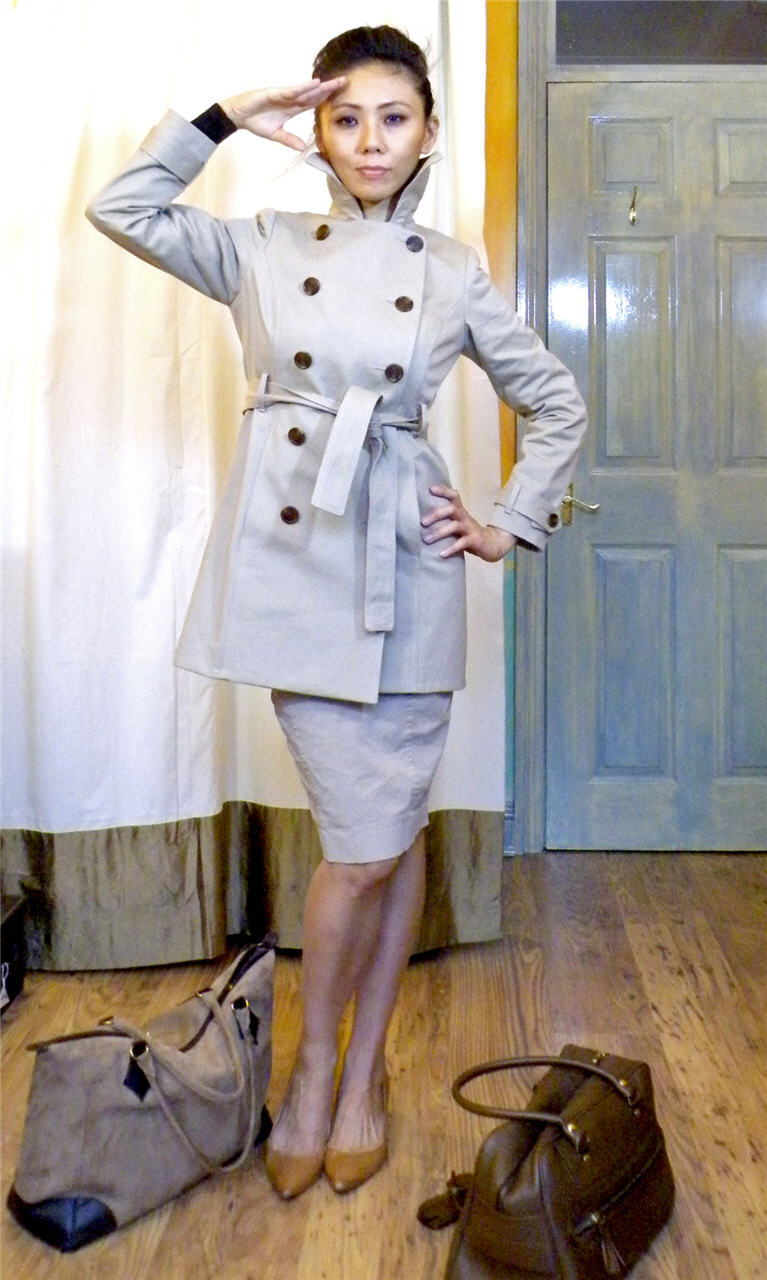
What do you think? Do I give Emma Watson & Cara Delevingne a run for their money?
No? Oh. OK, better keep the day job then 😉
Fabric & Notions Used
As you can see, the velvets have disappeared.
After reading all your suggestions, and rudely checking out every trench out there on the rack & moving about, I decided to save the velvets for another make. On closer inspection, the caption on the Louis Vuitton inspiration does say “glazed linen” after all. And almost every trench I saw was made with softer, thinner fabric, typically plain weave, not twill weave. (Poplins maybe?) Plus I came across some luscious coated linens & cottons at the Cloth House on Berwick Street (#47 branch, basement). Perfect excuse for fabric shopping, no?
As for the wrinkles…actually this chino doesn’t wrinkle any more than all the trenches out there. It’s probably just me not being used to cotton / linen, and/or being an overzealous sewing enthusiast who doesn’t know where to focus one’s perfectionism on.
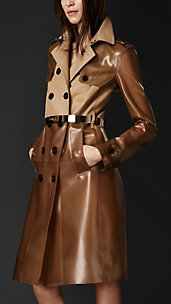
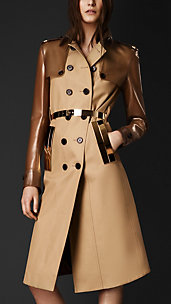
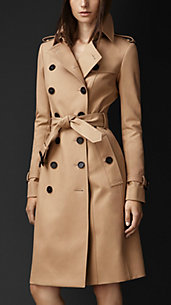 There was much agony about whether to continue with this fabric after the velvets dropped out. Then I checked out the grandaddy of trenches, Burberry. They currently have chic designs in rubber forchrissake! That has as little drape as my stiff-as-cardboard chino if not less. So I’m fine.
There was much agony about whether to continue with this fabric after the velvets dropped out. Then I checked out the grandaddy of trenches, Burberry. They currently have chic designs in rubber forchrissake! That has as little drape as my stiff-as-cardboard chino if not less. So I’m fine.
Size Used
8 + FBA instead of the 12 the sizing chart would have me sew.
Now I’m not 100% sure about this approach for a trench. I mean I wear trenches open as much as buttoned. While FBA gives me a great skimming fit while buttoned, I do wonder if there’s a bit too much bust shaping for the front to hang well unbuttoned. Given that I’m not a true busty gal – I’m one of those weird B-cup with big rib cage I think – maybe a bigger size with less bust shaping would be a better choice for coats like this.
That’s one reason this is a wearable muslin – I need more time to stew on this issue.
Changes Made
There was no great changes needed on this pattern as the unaltered tissue fitting photos & numerous makes by others can attest to. But since I’m after a TNT pattern, I went the extra mile. So don’t let my review put you off making this pattern!
Fitting changes
There was a bit of fitting wobbles after the pin-fit as well. But let’s save that melodrama for a round-up of my thoughts on the FFRP/JFRP tissue & fit-as-you-sew. For now, here’s the summary of all the changes I eventually made…
- Rounded Upper Back Adjustment: +3/8″ CB length above shoulder blades, -1/2″ width total at CB neck edge.
- Sloping & Forward Shoulder Adjustments: front shoulder -1/2″ length at armscye edge, side seam -1/4″ length at underarm, sleeve cap height -3/4″ to match / reduce ease to manageable amount.
- Forward Head Adjustment: back shoulder +1/2″ length at neck edge, shifted whole front neckline down 1/2″, collar band +1/2″ width at back neckline to match.
- Wide Shoulder Adjustment: +1/8″ width at shoulder armscye edge.
- Princess Full Bust + Short-Waist Adjustments: side front panel +7/8″ width at my bust, -1/2″ length from side front, side back, & back panels.
- Sway Back Adjustment: –1/2″ CB length at lower back.
- Short Person Adjustment(!): -3/4″ length just below hip.
- Lower left shoulder & smaller left back: +1/8″ height to left shoulder pad, left side back panel -1/4″ width at armscye.
- Larger right bum: right back princess seam +3/8″ width total below waist.
Design changes
- Front princess seams: moved 1/2″ towards the front for hopefully a more slimming look.
- Sleeves: -1/2″ length & converted into 2-piece sleeves for hopefully a better & more fashionable fit. Most of the fashion clippings I have tend to have the length just below the wrist bone. I guess that makes your arm look slimmer than if the sleeve ends at the wider palm area.
- Collar: convert under-collar into 2-piece – the tailors do it & so should I!
- Shoulder pads: used self-made 1/8″ pad to avoid a footballer look. (Had to add another 1/8″ to the left one though as I’m lopsided!)
- Belt loops: moved up so they sit above my waist & moved / added extra so they’re just to the side of the princess seams. Again, hopefully more slimming than right at the side seams.
- Buttons: added 2 more sets above existing ones. So I can button the front up on a cold day!
- Pockets: replaced the pattern with much more sensible big self-drafted pocket pattern & moved these up a little bit so my hands can reach into them easily.
- Modified patterns for turn-of-cloth: for that more professional finishing.
Verdict on the Instruction
The instruction looks V-E-R-Y long & complicated (143 steps!!!). But that’s because there are multiple variations covered. The steps themselves don’t look complicated. But if you’re following them, just double check you’re following the right steps for the version you’re making.
I of course ignored most of it! Instead I tried to cram advice from multiple sources all into one project. So highly NOT recommended. Perfect recipe for head scratching, delays, oops & redos. I got there in the end. Just. More reasons this is a wearable muslin.
- First let’s talk stabilizers. I interfaced the whole front. But on the facing I only interfaced the lapel & buttonholes. This was to reduce overall stiffness. Following the example of my Topshop RTW trench, I also interface the hems on bodice & sleeves, stabilize the shoulders with Dritz Stay Tape, and the back neckline & bodice armscye with Vilene Bias Tape. I was going to interface the sleeve armscye as well, but I couldn’t figure out how to do it without impeding the sleeve cap easing process. I didn’t draft separate interfacing patterns this time. Instead I tried Jackets For Real People‘s interfacing cutting technique: Cut 2 sides, shift over a full seam allowance’s width (5/8″), cut the remaining 2 sides.
- Neither did I manage to draft separate lining patterns this time: It was just getting too overwhelming by that point. So the ease are all added at the easiest points – at underarm, hems, vertical seams. As suggested by Classic Tailoring Techniques: Men’s Wear I also added a bit of width ease to multiple vertical seams in addition to CB. I reckoned that if it’s coming from the land of traditional tailoring, there must have been decades of experience backing it. All the lining seams were overlocked as suggested by Kathleen Fasanella to keep down the fraying.
- Like the jacket I made for my niece, the lining for this trench was also bagged. I was lucky this time in that I had to cut a hem facing since I thought I was going to add the velvets so didn’t add hem allowance. This meant I could finish the tricky front-facing, hem, lining joint neatly before the whole bagging process. Again, I left the gap for turning the garment right side out in the lining – hem seam.
- The back vent I had wanted to do like the RTW trench as the finish looked neat. But I hadn’t studied the RTW carefully enough, so missed the fact that the lining CB seam slant from CB at the neck to one side at the vent so that the seam lined up with the edge of the vent underside. I just saw one continuous straight seam.
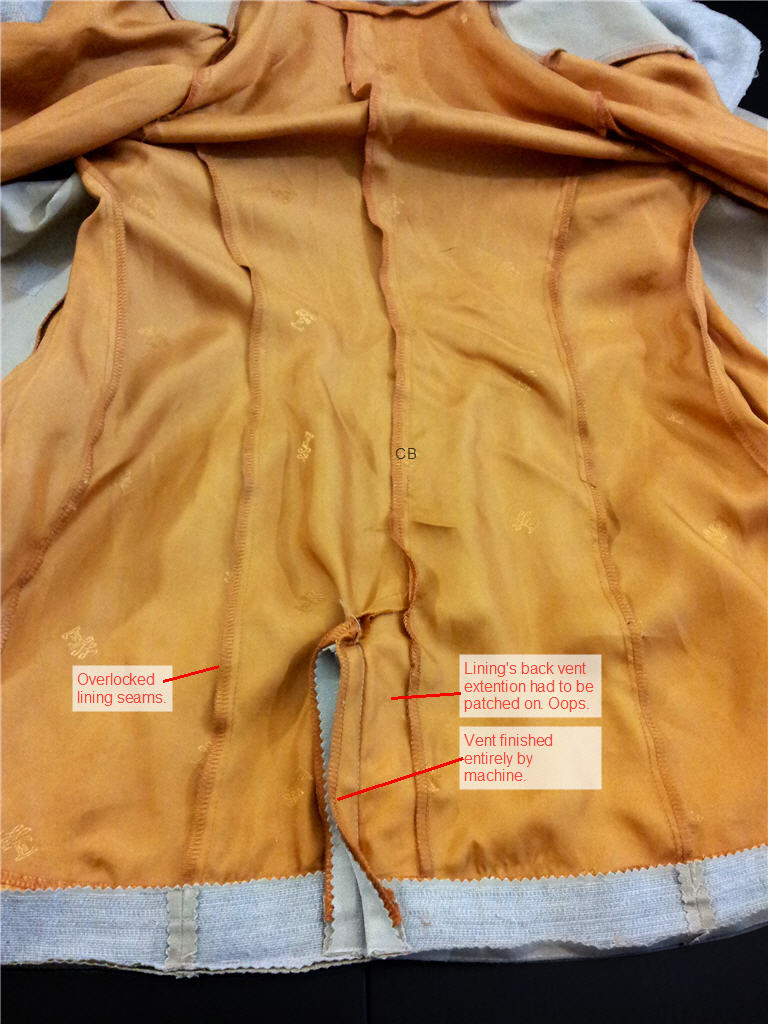
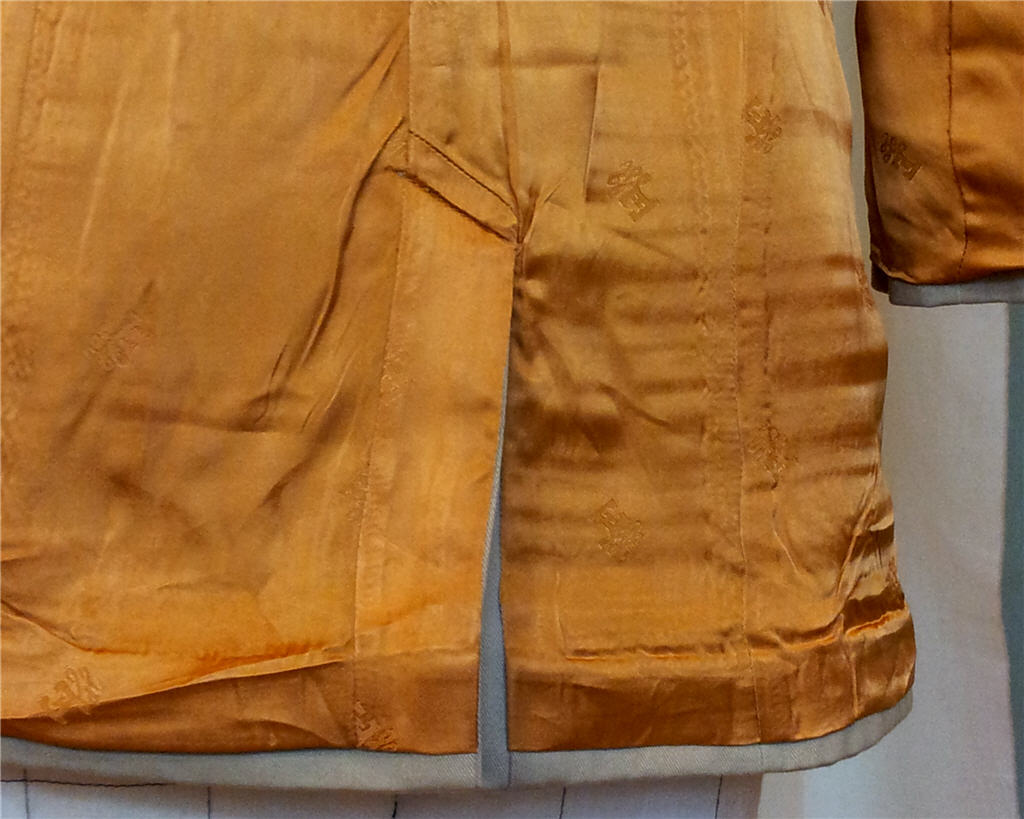
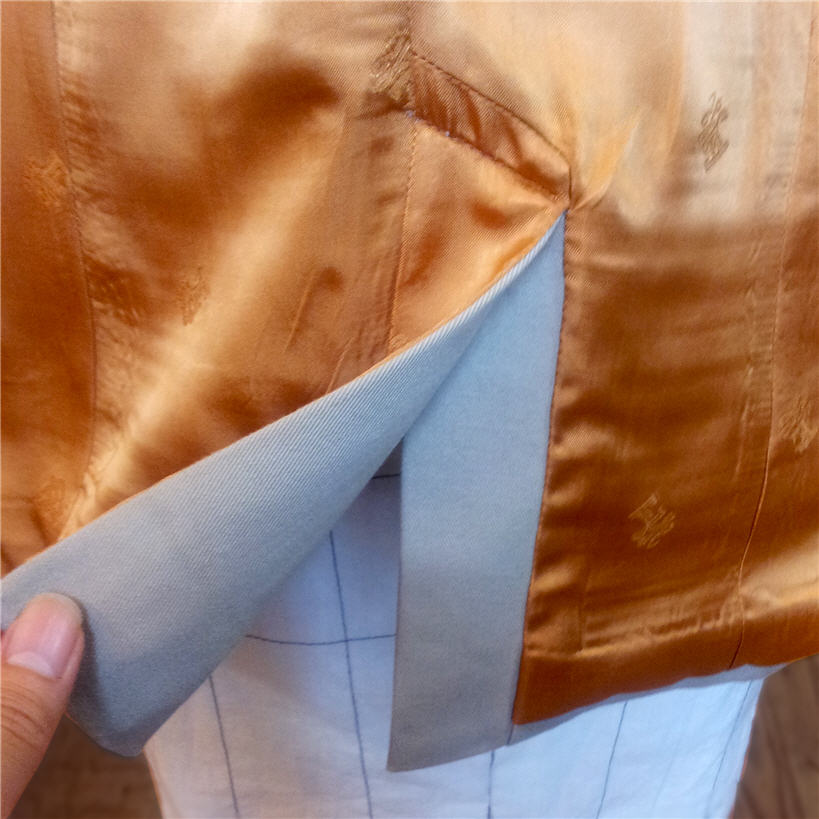 So I mistakenly cut my lining with standard CB seam allowance without vent extension and had to patch an extension on afterward. In the end I was able to finish the vent neatly all by machine.
So I mistakenly cut my lining with standard CB seam allowance without vent extension and had to patch an extension on afterward. In the end I was able to finish the vent neatly all by machine.
- I tried to batch sew as much as possible. But not having done the prep work (sorting out all the pattern alterations ahead of time), it wasn’t really efficient. It only added to my general confusion. So not recommended unless you have very little changes to make during the construction process.
- I did manage to sew a lot of the seams pin-free! It was quite scary, and when it came to the slippery lining, there were stretches of redos here & there. But practice makes perfect right? 🙂
- And another thing I practiced on was hand-sewn keyhole buttonholes. I was going to use my machine’s automated one, but I couldn’t get it to sew the keyhole symmetrically. Even with paper-thick stabilizer underneath it still wanted to do its spirally thing rather than a perfect O.
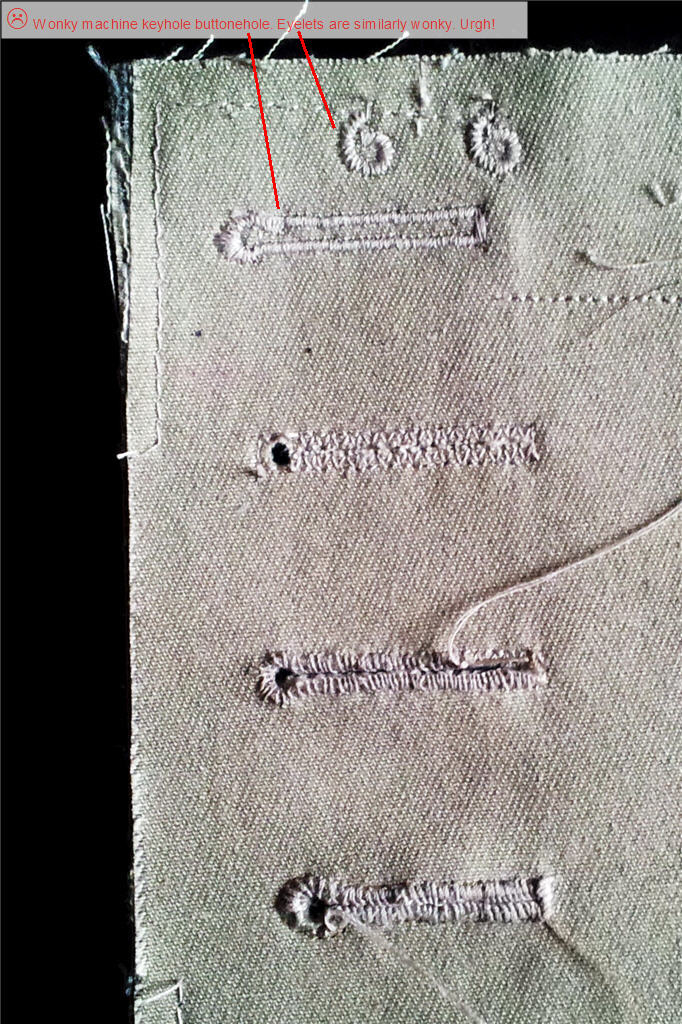
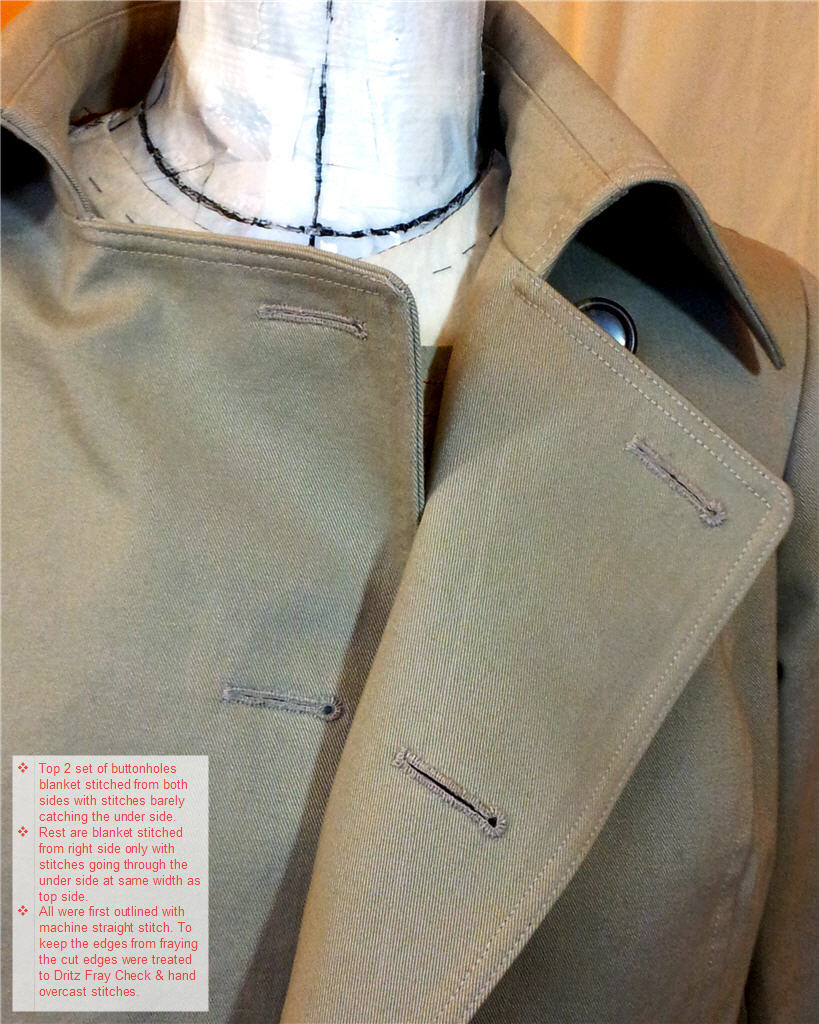 So in the end I resorted to hand-sewing. Yes, all 13+4 buttonhole of it. The +4 is for the top 2-set of front buttonholes which are visible from both sides depending on whether the front is buttoned up or not. How’s that for self-torture? The instruction I used is a combination of Claire Shaeffer’s Couture Sewing Techniques and this forum post on Cutter & Tailor website.
So in the end I resorted to hand-sewing. Yes, all 13+4 buttonhole of it. The +4 is for the top 2-set of front buttonholes which are visible from both sides depending on whether the front is buttoned up or not. How’s that for self-torture? The instruction I used is a combination of Claire Shaeffer’s Couture Sewing Techniques and this forum post on Cutter & Tailor website.
Would I sew it again / Would I recommend it to others
I better! After all that effort.
I am however waiting for road testing results before finalizing my TNT trench pattern. It’s not just about the look you know. A garment like this must pass rigorous practicality test! Is the pocket in the right place? Can I move in it? Is it easy to slouch in & still look chic the next day? Does it play well with other clothing? Is it easy to take care of? (On this last one I’ve already given up. Nil point. This fabric likes to get out of shape. No way am I going to try to steam everything back into place after laundering. Dreaded dry cleaning it will have to be.)
Once it pass the test, I’ll have to tidy up the pattern, maybe draft the separate lining pattern, & transfer onto longer lasting kraft paper.
I would definitely recommend the pattern to others though. So many people have had great looking results with it. Just make sure you at least substitute a larger pocket pattern if you are keeping the pockets.
As for this wearable muslin, I think it’ll be getting plenty of wear alright. While it’s not perfect, I think it looks good enough to fool the non-sewing folks. Now if only the weather here would only be a bit warmer…I don’t want to wait till spring to wear my new trench!

